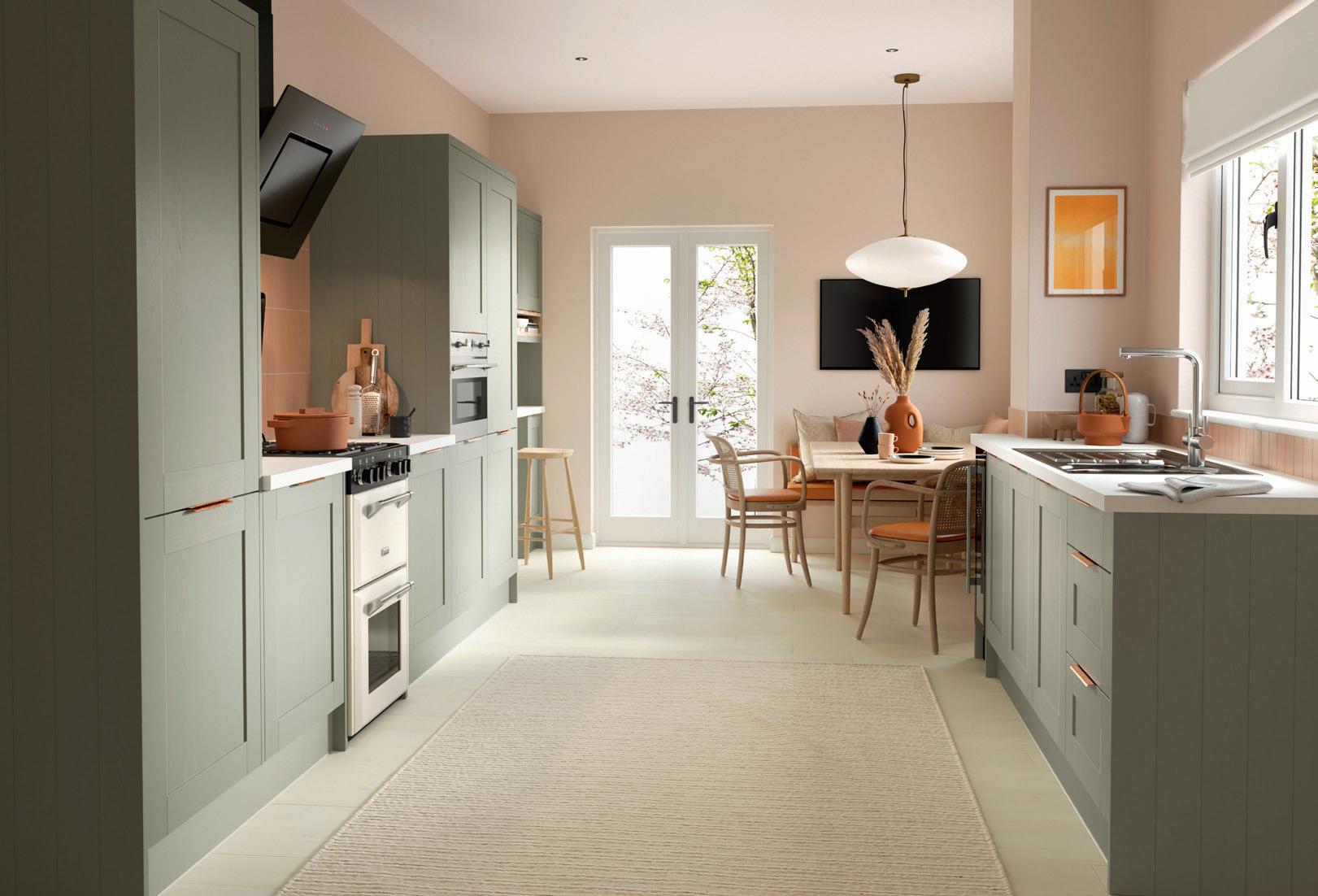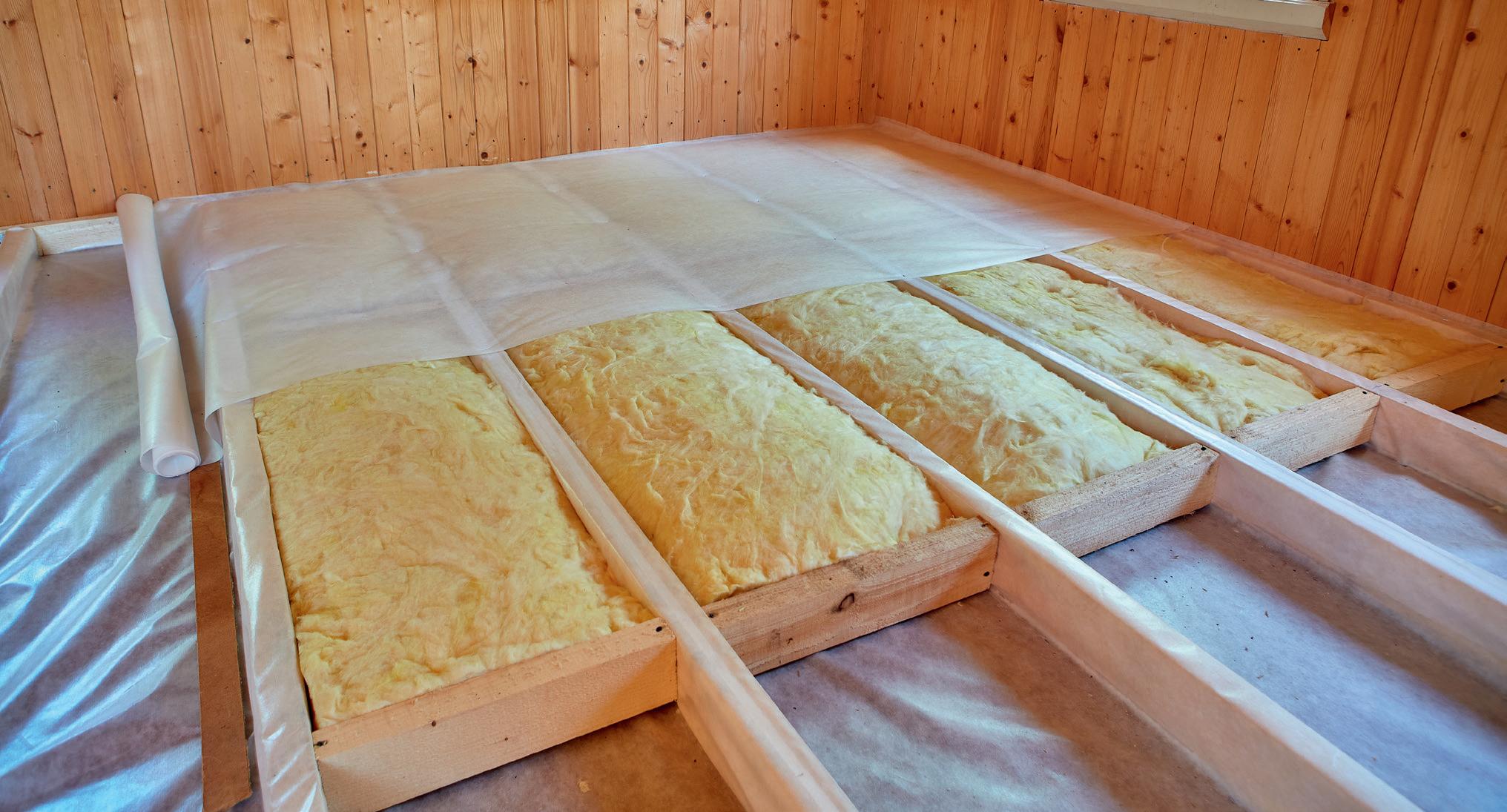














Like limescale on your frontal lobe, the buy-to-let experience deposits stress at every stage. It doesn’t have to.
hether it’s the search, the purchase process, or the struggle to find the right tenant, buying to let can test your will to live.
But what if it didn't? What if it was easy?

GetGround’s buy-to-let platform is the only way to invest with zero delay, and zero despair. Join 14,000 of your fellow investors, and discover:
Hundreds of high-yield properties, across the UK
Everything you need to complete, from mortgages to property management

A tax-efficient limited company, designed in half an hour
Ongoing accounting & tax returns, with a business account included
All that, under one roof.
Find your next investment faster, with a GetProperty package. Start today, and get £250 off.*
Get started here: Excellent 4.6
Offer ends 30 Nov.
*Terms and conditions
for details. This is for your information only – you shouldn't view this as investment advice, or any advice at all. You should not make any investment decisions unless you understand the nature of the decision and the extent of your exposure to risk. You should also be satisfied that any product or service is suitable for you and, where necessary, GetGround always recommends you seek out independent advice before making any investment decisions.

Hi, it’s Martin Roberts - him off the telly! - welcoming you to the latest issue of Property & Home, your unmissable guide to buying, renovating, decorating and selling property.

It’s certainly been a turbulent time in the property market, and in the world in general - I know from personal experience how some parts of the world have been plunged into chaos, and it sometimes seems that the economy is going the same way. When the coronavirus pandemic ended, there was a property boom, but now there seems to be nothing but uncertainty, with a costof-living crisis and rampant inflation.
But as I always say, the best time to buy is today - I still have faith in the property market, because over the long term, there’s only one way it can go, and that’s up!
I see all sorts of properties travelling around the country filming for Homes Under the Hammer,
and the one thing you can always be sure of is demand. And there are still profits to be made if you’re ready to roll your sleeves up, do your research, and get stuck in.
So, in this issue we have lots of advice on how to raise finance, negotiate the best mortgage deals, manage rental properties, and of course on how to ‘do up’ the property you have, making it more energy efficient and more attractive to buyers.
Winter might be coming, but if you think positively and follow our top tips, you can look forward to a cosy future in property. I hope you enjoy this issue of Property & Home with Martin Roberts, and that it makes you as enthusiastic as I am about the property market!
Cheers, MartinMartin Roberts tells Chris Jenkins about his latest property projects and how he thinks the changing market should alter investors’ plans


All the news about new products, services and issues a ecting the property market


What are AML checks and why might you be subject to them? Here’s all you need to know and do

New laws mean that landlords are required to carry out ‘right to rent’ checks on prospective tenants. Could this a ect you?

24 When Limited is Better Philip Gambrill FCCA explains when and why you might want to turn your property investment scheme into a limited company
Charles Knapper LLB answers questions about property transactions - this issue, why paper documents are a risk

If you are interested in overseas property investment, you need some advice on how international money transfers work
If you are thinking of getting into the property market, what are the pros and cons of setting yourself up as a limited company?
Renting out your home is becoming a popular source of income - but what are the possible pitfalls of this lucrative side-line?
Buying property in beautiful Thailand can be attractive, but it’s a complicated business. Read all the facts here
A bridging loan may be just what you need to make a property purchase viable - but how do they work and what must you bear in mind?


The Federation of Master Builders has been guaranteeing professional standards for over 80 years - but what can it do for you?



How do you make a Stamp Duty refund claim? It’s something you need to know if you think you have been charged wrongly
As a property owner or landlord, you may need professional advice on all sorts of legal matters - here’s a guide to the most crucial areas
One of the proposals to help people get on the property ladder is the 50-year mortgage. But would it help first-time buyers, or burden them with debt?
Climate change reports say that coastal erosion and ground subsidence will destroy communities and damage thousands of buildings
What is the importance of an inventory for rental property, and why should you get a professional consultant to help do it?

What is ‘title splitting’ and how could it benefit your property portfolio? Read here for the undivided truth...
All the news about new products, services and issues a ecting the home market




A er our sweltering summer, you might be seriously thinking about fitting air conditioning. But what are the pros and cons?
The kitchen is where we go to warm up and get fed - in many ways it’s the heart of the house. What are the latest trends?


Is your kitchen looking tired and shabby? Maybe rather than replacing it entirely, you can give it an a ordable faceli
Cleaning your home is essential, but the chemicals in cleaning products can be nasty. Where do you look for a safer solution?
Sealants and adhesives are becoming increasingly useful in building and DIY, but how do you choose and use them?




Read all about it! Your house’s guttering might be in a scandalous state. If you want to avoid gutter shame, here’s how to upgrade

Energy prices are in everyone’s mind, so with the Winter coming, which is the best option for heating - gas or electric?
We’ll all need help with our soaring energy bills in the winter. Here’s how a government grant could help you make your home more e icient
With winter coming in, a faulty boiler is the last thing you want. How do you keep them covered?




With fuel prices soaring, can wood-burning be an economic, ecologically sound alternative? We look at the facts about wood-burning stoves
No, we’re not talking about the utility companies - we’re thinking of the things around the house that drain your energy and push up your bills
Floors take the brunt of everyday living, so it’s important to keep them clean and maintained. Here are a few top tips
A tired or shabby bathroom, kitchen or utility room can look great with new tilingand there are lots of designs to choose from
We all deserve a good night’s sleep, and a comfortable bed is the best place to start. We sleep on the most relaxing new designs
Is your home ready for the cold? Here are our top tips for surviving the winter season
The first rule of DIY is that you must have the right tool for the job. So where do you start in putting together a toolkit?
All the news about new products, services and issues a ecting the garden market
With food bills rocketing, is it really practical to grow your own fruit and veg?
... are a happy bunch, because sales are going through the roof. We look at some hot trends in see-through garden buildings

Is it possible to create a thriving garden without using any harmful chemicals?
Here are some to tips for creating an environmentally friendly system
... and they’ll take care of you, as gardeners say. So here are a few top tips to make sure your garden implements stay sharp
Maintaining your hardscape is as vital as looking a er your plants - it’s all part of the annual tasks of the gardener
Firepits are becoming a popular garden feature. We look at some of the variations and how they can make your garden cosier
The hose is one of the most useful implements in the gardener’s arsenal - how do you keep yours fit and healthy?
Is it possible to grow the exotic vegetables used in Asian recipes in the UK? It is if you know your duhdi from your mizuna
PUBLISHER & CEO
Kevin Harrington
EDITOR Chris Jenkins
CONTRIBUTORS
Dick Benson
Thomas J Roberts
Margo Lane
Delicia Tasinda
Joanna Harrington
ADMINISTRATOR

Tabita Minculet
PUBLISHED BY COPYRIGHT © 2022, CELEBRITY ANGELS
ALL RIGHTS RESERVED

Martin Roberts
Property & Home with Martin Roberts

Celebrity Angels 143 Caledonian Road London N1 0SL Tel: 020 7871 1000
For sales enquiries call: 020 7871 1000
It’s a worrying time in the property market and the world generally, but Martin Roberts has some reassuring advice for anyone concerned about future
All material in Property & Home with Martin Roberts is wholly copyright and reproduction without the written permission of the publisher is strictly forbidden. Products and services included in this publication do not imply endorsement by Martin Roberts. The views expressed in this publication are entirely those of the writers and do not necessarily represent those of Celebrity Angels. The information in this publication is carefully researched and produced in good faith, however, neither the Publisher nor the Editors accept responsibility for any errors. The Celebrity Angels Series is published in the UK under licence by Damson Media Limited. Damson Media Limited is registered in England and Wales under registration no. 07869300.






Martin Roberts, celebrity guest editor of Property & Home, talks to Chris Jenkins about the ups and downs of the property market, and tells us what he thinks about the turbulent economy and how this could affect the fortunes of buyers
The name of Martin Roberts has been closely associated with the property market since he started work on the BBC’s Homes Under the Hammer in 2003. But Martin’s experience goes back further than that, to when he got into property development in the 1990s. Having travelled all around the country and looked at thousands of properties from unliveable wrecks to the most luxurious mansions, and developed a series of popular property buying seminars, Martin is in a unique position to know about buying, renovating and selling property for a profit. But these are difficult times, when there are all sorts of challenges created by the rising cost of living and the turbulent economy. So does Martin still think that the property market is a sound game to be in? Read on for the words of the man himself...
Well, these are undoubtably turbulent times, with uncertainties regarding interest rate rises, the cost-of-living crisis and general world instability.
However, the property market has proved its resilience even in unprecedented periods of history, such as throughout lockdown. The recent rises in property prices have been fuelled by many factors, including changes in work habits, lifestyle alterations, and perhaps the desire to make changes sooner rather than later because the future now seems so uncertain. The last few years have seen house price growth that few predicted and despite the current climate I think there is still further to go. »
celebrityangels.co.uk
The recent reduction in Stamp Duty, and specifically the increased help for first-time buyers, goes some way towards reducing additional costs associated with buying a property. But it’s always been historically difficult to get that first foot on the ladder. However, believing you can use your position, whatever that is, to stack things in your favour, rather than disadvantage you, is a useful mindset shift. So, make it personal.
I recently lost out on buying a house, despite offering the full asking price, because the people specifically wanted to sell to first-time buyers. Therefore, get the seller to want to sell to YOU. Explain your circumstances, and go OTT on how much it would mean to you to buy their house!
It would certainly seem that private residential landlords are being unfairly penalised for the important role they play in the UK property rental market. Certainly, for private individuals, some tax reliefs and incentives are no longer available. However, for those buying in the name of a company or similar legal entity, many of those reliefs are still legitimately available. But even property owned in a personal name can still prove profitable, so long as costs are carefully controlled.
Rents are rising, and yields on investment are still potentially much higher than through other forms of investment. But before you buy, it’s vital that you do your research, and make sure you are buying the right kind of property in the right area. A house suitable for
I recently lost out on buying a house, despite offering the full asking price, because the people specifically wanted to sell to first-time buyers.
students within easy striking distance of the campus? TICK! A large family home near popular local schools? TICK!

Many local councils now have restrictions on who can buy property in popular holiday destinations. There is also sometimes a restriction requiring developers to sell exclusively to locals, or at least sell a portion of any newbuild properties to them at a discounted price. I understand the frustration of locals, but I’m not sure a blanket ban on sales of second homes in lovely parts of the country is the answer, fair or reasonable.
Like anything new, freshly built houses are bound to have ‘settling in’ issues. Modern unseasoned wood shrinks, plaster cracks as it fully dries, joints separate. All these issues come under the description ‘snagging’, and it’s impossible to deal with all snagging issues as soon as a property is finished, as some will take months to come to light. There is nothing wrong with this, so long as the builder resolves any such issues when they finally arise.

There is so much you can easily do to reduce the running costs of your home. The recent meteoric rise in energy prices has made us all acutely aware of our energy usage in a way that even years of ‘green’ campaigning would not have done. But all these things we’ve been hearing about for years now have financially painful relevance.
So; Insulate your loft with ANOTHER layer of insulation, even if you think it’s got enough already. Turn your boiler temperature down by at least 5 degrees. Have your boiler serviced regularly to make sure it’s working efficiently, and consider a replacement if it’s over 10 years old, as modern boilers are considerably more efficient. Replace ALL your light bulbs with energy saving equivalents. Use an old-fashioned draft excluder at the bottom of exterior doors. Install or upgrade your double glazing. Consider alternatives, such as ground or air source heat pumps and solar panels. »
There is so much you can easily do to reduce the running costs of your home.celebrityangels.co.uk PROPERTY & HOME WITH MARTIN ROBERTS
The houses we feature on Homes Under the Hammer continue to be a hotch-potch representation of the diverse properties that come to the auction market. I’ve recently filmed in a haunted church and a former public toilets! But for the most part, auction properties are solid opportunities to get your hands on an investment you can add value to, or be a place to live, without the worry of the gazumping, broken chains and shattered promises that often accompany houses bought via more traditional routes.
I love my DIY, but like anyone I occasionally mess things up, and embark on a job that
ends up worse than if I hadn’t touched it. Despite taking suitable precautions, there’s nothing worse than that sinking feeling when you realise you’ve drilled through a pipe or electricity cable when all you were trying to do is put up a shelf!
I’m particularly proud of my sheds, which are getting more and more elaborate. I’ve now run out of garden space, so I’m moving into the trees with multi-level constructions that rival a Tibetan cloud forest monastery!
I’m currently embarking on one of the most challenging projects of my property life. I’ve just bought a pub, restaurant and hotel in the Rhondda Valley of South Wales. I’ve never owned or run any of those things, so what could possibly go wrong? Well, quite a lot actually, which is
why I’ve decided to film the whole thing for a new TV documentary. It will feature local characters who will help me and relevant experts who will guide me. And it should be a helluva ride. Look out for “Ooops!

I Bought a Pub !”, coming to a channel near you, some time next year. And wish me luck!
Christmas and New Year have always been a special time for me, especially since having children. They are now 13 and 15, so some of the wide-eyed wonderment has gone, but it’s still a family event that we spend at home. The times I’ve been abroad for either just hasn’t felt right. So home, by the fire, egg-nog in hand, watching movies I’ve seen before, is where I will be. Wherever you are, I wish you a very Happy and Healthy one! ■



The cost-of-living crisis prompted by energy prices is bad enough, but experts predict a likely slowdown in economic growth that will trigger a selloff in Britain’s housing market, with consequences for personal wealth and the broader economy that could resonate for decades.
The government’s new economic strategy, designed to promote growth, seems to have had the opposite effect, with the collapse of the pound on the international currency markets and a consequent increase in interest rates in an attempt to stop rampant inflation. How well Finance Minister Kwasi Kwarteng’s plans went was shown by his dismissal after 38 days in office.
Mortgage lenders are scrambling to keep up with unpredictable market swings, withdrawing some mortgage plans until they can work out new rates to offer buyers. Meanwhile mortgage payers, who might feel secure on a fixed rate, may have a nasty shock when that rate comes to an end and their payments skyrocket.
The predicted result is a crash in property prices. Recent government data showed that 24.7 million or just under twothirds of UK properties are owner-occupied, with 8.8 million owned outright, and 6.8 million owned with a mortgage or a loan.

Potential home buyers looking for a mortgage can now expect to be offered rates of 5-6 percent, a steep rise compared to the two percent or so which has been common for several years.
“The mortgage crisis is going to be bigger than energy now,” said Richard Murphy, professor of accounting practice at Sheffield University, warning of a drop in house prices that could leave many with debt greater than the value of their home. “This will end in tears.”
Since the 2007/8 global financial crisis, interest rates have been historically low, and a low supply of housing stock has fuelled the doubling of the average price of a British home to £292,000 pounds from just £154,000 in 2009. This bubble may now burst, adding to the woes of homeowners.
Landlords are reportedly quitting the rental market over excessive legislation, creating a shortage of rental accommodation, particularly in areas with heavy demand. Wales Online reports “100 people fighting for every property” for rental in Cardi , with one renter saying “Properties are too expensive and there’s not enough to go around.”
Landlords put the blame on changes in regulations, saying they feel they are “under a sustained attack”. They say that recent rule changes are driving up rent and causing a “supply crisis”, with the only properties on the rental market at higher rents.

One landlord said that the changes, described by the Welsh government as “the biggest change to housing law in Wales for decades” have put them on the verge of “just giving up” and selling their properties. “What we’re seeing right now is the upshot of what happens if you over-regulate and over-tax the private rental sector” said one landlord.
The changes mean that landlords can no longer deduct mortgage interest payments from their tax bill, restricting the income tax relief they can claim on their mortgage interest payments. The new regulations stem from the Renting Homes (Wales) Act 2016, passed by the Senedd to simplify the renting process and introduce standard-form contracts for tenants, and section 24 of the Finance (No. 2) Act 2015, which introduced the tax changes that only come into full force this year.

Landlords describe the changes as ‘absurd’, claiming that they should be allowed to treat mortgage interest payments as a business expense. The changes come into e ect in December, and one landlord described them as “the straw that breaks the camel’s back.”

The Act also changes the notice period for a no-fault eviction in Wales from two months to six months, which landlords say could put them o investing in properties because they wouldn’t have the security of being able to repossess them quickly.
Students looking for term-time accommodation are being particularly a ected, with Cardi Students’ Union saying: “It’s becoming a desperate situation for students faced with either deferring their course or thinking about the financial aspect of whether they can go to university without a flat or a room to stay in.”

The Federation of Master Builders (FMB) connects homeowners with quality, local builders you can trust. FMB members have been vetted and their work has been independently inspected, so you can build with confidence. Find a Master Builder online. www.fmb.org.uk/PropertyandHome
Velvet o ers an all-in-one service for mortgages, protection (meaning life insurance, critical illness and sick pay) as well as home insurance. They take the stress away from you, meaning you can speak to someone outside of the rigid banking hours. www.vmis.co.uk
Mul-T-Lock’s MTL300 Break Secure® 3XP is designed as a retrofit high-security cylinder for PVCu doors. Insurance-approved, it provides four individual levels of enhanced mechanical protection. Incorporating patented technology, each element works together to safeguard homeowners against cylinder snapping attacks. www.mul-t-lock.com

What is an AML check and why might you have to undergo one as a homebuyer? Here’s the explanation and what to do about it
Money laundering is the process of turning large amounts of ‘dirty’ money earned through criminal activity into ‘clean’ money which appears to come from a legitimate source, and can’t be connected to anything illegal. It works by feeding illicit cash through a legitimate business, so the property market, where large sums of money are handled through buying and selling houses, is an ideal target for money launderers.
For that reason, if you are buying a house, you may be asked by your estate agent, solicitor or mortgage lender for
information to help them do an AML (Anti-Money Laundering) check. But there’s no need to change your name and flee the country - though it can be an uncomfortable feeling to be under suspicion, if you are legit, it’s fairly straightforward to prove it.
So why might you be flagged for checking? Cash buyers are top suspects; though buying a property with cash is a quick way to do it, and attractive to sellers, it can also attract the attention of the authorities. It’s essential that you can show where your cash came from - legitimate wealth should come with paperwork to

prove it. You might be asked for details of wills in which you have inherited, gifts of money, perhaps from your family, sales of stocks or shares, or lottery of gambling winnings. If cash has been built up over the years you may have to produce bank statements.
Make sure you have identification documentation such as birth certificates, driving licences and passports available. Any delay in producing these may cause suspicion. Common oversights include failing to update your name on documents
if you marry or divorce, or your current address if you have moved previously. You may also be flagged for examination if you have a history of buying and selling properties in a short time, a common pattern of behaviour among money launderers. If you are selling after a short time, you should be able to explain why. It’s not in any case a good idea to sell quickly, as many lenders will not finance the purchase of a property within six months of a previous sale.
A common source of money laundering is from overseas buyers, so they often attract additional checks, so if you are selling to an overseas buyer, you may expect delays.

Of course, the money laundering business likes a busy and fast-moving property market, so the practice has been on the rise in recent years. HMRC has been tightening the noose around property market money launderers, so estate agents have to go to great lengths to ensure no illegal activity is occurring. They could face hefty financial penalties if they miss anything.
If you are worried about the process of AML checking, there is digital technology which can help, such as the app from Credas Technologies. This includes identity tools such as biometric facial recognition and real-time diligence checking, and powers many of the UK’s AML (Anti-Money Laundering), KYC (Know Your Customer) and IDV (Insured Declared Value) services in the UK.
Tim Barnett, CEO of Credas Technologies, says: “The housing market is exceptionally busy at the moment and so the need to be particularly vigilant of money laundering has never been greater.

“For legitimate buyers, being flagged for an AML check may come as a cause for concern which is only natural, but there is really nothing to worry about.
“Much like the wider process of purchasing a home, the best approach is to have all your documentation in order so if you do have to undergo an AML check, it can be completed swiftly and you can proceed with your purchase.” ■
“Over the years of filming Homes Under The Hammer I’ve met hundreds of people who have bought a run-down property at auction with the intention of flipping it to make a quick profit, and back in the days when I started on the show, it was possible to do this in as little as six months provided you pulled your finger out and knew what you were doing.
“Nowadays, mortgage lenders are sceptical about borrowers taking out loans for such a short period of time and take a dim view on this practise – I guess from their point of view they have the costs and administration associated with setting up a mortgage with the expectation that they are going to have a customer for years - so they have banned flips for anything less than 12 months. That’s not to say the practise doesn’t still go on - it’s just the timescales for a flip are now that bit longer.”
celebrityangels.co.uk




Heidi Shackell CEO of The Lettings Hub explains how agents and landlords need to redefine their tenant referencing to safeguard against new legislation requirements and the rise of fraud within the lettings industry.
Tenant referencing has always been the foundation of the lettings industry for both landlords and agents large and small. However, in an increasingly complex world in which over the last few months we have seen changes in legislation including Right to Rent checks, an increase in fraudulent applications by tenants and the cost-of-living impacting affordability. Getting the right tenant into your property is paramount to protect your rental income and security, with the ever lengthening and demanding list on checks, financial and legislative implications which makes “in-house” referencing and Right to Rent checks ever more demanding. Both on administrative time and the impact on individuals to take on the legislative accountability of making sure they get it right or face lofty fines and potential loss of rental income.
With articles regularly in the industry press reporting on the increase of fraudulent tenant applications, and with the amount of fake UK and Irish ID documents tripling in the last two years. Ensuring you are able to spot a fake document will be integral to protecting yourselves against the perils of a fraudulent tenant.
The housing sector is the 5th most impacted industry by document fraud in the UK
The majority of fake British documents are being seen by those making checks in the housing sector
Therefore, ensuring you are referencing tenants effectively and robustly will safeguard you from the potential high-cost implications.
With the new Right to Rent checks which came in on October 1st allowing agents and landlords to take this burden from their shoulders by using Digital Identity Verification Technology (IDVT) for all UK and Irish passports and identity cards. This latest technology to the industry allows for total digital verification of a tenant’s identity, removing human error and reducing admin time of the pre tenancy process.
Over the years tenant referencing has moved to an ever more tech focussed solution, but is solely 100% techbased referencing truly what gives you the most robust solution to the fundamental question when you are letting out a property- Is this tenant reliable, trustworthy and are they who they say they are?
At The Lettings Hub we don’t believe so, with over ten years’ experience in the industry and referencing approx. 200,000 tenants annually, we have created the magic Coca – Cola formula. By combining the human approach with industry leading technology provided by Government certified providers HooYu. We have redefined referencing and Right to Rent checks, providing a robust, comprehensive, time and cost effective solution. At The Lettings Hub we are so confident in our products we offer fraud protection guarantee and price match promise on our combined redefined tenant reference product.
Discover how tenant referencing can redefine your business at www.lettingshub.co.uk


New laws mean that landlords are required to carry out ‘right to rent’ checks on prospective clients. What’s required, and how does it work?
S ince 1st October 2022, landlords have been required by law to check a prospective tenant’s ‘right to rent’, basically the immigration status of the tenants, lodgers and any other adults who will be living in the property.
A right to rent check must be done by obtaining copies of the tenant’s documents in person, using the government’s online right to rent checking service, or by contacting a digital identity service provider.

The tenant will be asked to provide documents to show they have the right to live in the UK, either permanently or temporarily. They have the right to rent if any of the following apply:
h They are a British or Irish citizen
h They have indefinite leave to remain (ILR)
h They have refugee status or humanitarian protection
h They have settled or pre-settled status under the EU settlement scheme
h They have permission to be in the UK, for example, on a work or student visa
h The Home Office has granted them a time limited right to rent
If they are fleeing war in Ukraine, they have the right to rent so long as they have permission from the Home Office to stay in the UK. Right to rent checks must be done in a way that does not break equality laws.
If the permission to be in the UK has a time limit, the landlord must do a followup check after 12 months, or when the leave to remain ends if this is sooner.
Tenants can show a passport or
residence document to pass the check; if not a British or Irish citizen, the passport or documents must confirm their permission to be in the UK. If they do not have a passport, they have to provide two alternative documents, for example, a UK birth certificate and driving licence.
They can also prove a right to rent on the website GOV.UK if they have:
h Settled or pre-settled status under the EU Settlement Scheme
h A biometric residence card or permit
A full list of acceptable documents can be found on the GOV.UK: Right to Rent User Guide.
If a Right to Rent check is failed, the Home Office can send out a disqualification notice, asking a landlord to take steps to end the tenancy. ■
celebrityangels.co.ukChanges to mortgage relief regulations can make holding properties through a limited company more attractive to landlords. Philip Gambrill FCCA explains why

Philip Gambrill FCCA is a senior partner at PG Lemon LLP Chartered Certified Accountants in London and Kent. PG Lemon LLP can advise and assist on all aspects of the ownership of property portfolios. If you have any questions or want to arrange a meeting, please get in touch. Tel: 01227 362887. Email: info@pglemon.co.uk. Website: www.pglemon.co.uk
F or many years, the normal structure for ownership of rental properties has been either in sole name or as a partnership.
However, with recent changes to the mortgage relief that can be deducted from rental profits, the option of holding properties through a limited company can be more attractive to landlords looking to grow a residential property portfolio.
The advantages of holding a portfolio through a company include:
h There is no mortgage relief restriction for a limited company.
h The rate of Corporation Tax chargeable on profits is lower at 19% than the personal rates of 20%, 40% and 45%.
h If the intention is to retain funds to fund further purchases, then the owner is not taxed personally on the funds reinvested.
h The corporate structure provides the owner with limited liability.
h As the properties are not in your name, difficult tenants would only have the company registered address and not your personal address.
h The corporate structure means it can change Directors/Shareholders easily to effectively change the ownership of the properties. This is easier than changing ownership of properties when owned personally.
h The use of dividend allowance of £2k plus personal allowances allows

tax efficient extraction of funds for family members.
Of course there are also some disadvantages!
h Potentially higher mortgage rates and less choice, although the market is expanding for corporate mortgages.
h More administration and requirement to file accounts and company tax returns including ATED returns if any properties are valued over £500,000.
h Property transfer fees such as CGT, SDLT, and Mortgage Repayment fees if moving existing properties into a company, although in certain circumstances there are exemptions that can reduce some of these costs.
h No Capital Gains Allowance when selling a property and potentially double taxation if these proceeds are extracted from the company rather than reinvested.
The recent changes in taxation, particularly the Section 24 restriction of mortgage relief for higher rate taxpayers, have made many Landlords consider the most appropriate structure to hold their properties, whether this be a partnership, a Limited Liability Partnership or a Limited Company.
Before making a decision, it is recommended to obtain professional advice to fully understand the various consequences and avoid expensive mistakes. ■














Charles Knapper has 24 years of legal experience in property, disputes, family and children’s law, wills and probate, and is a Consultant Partner of Curtis Whiteford Crocker Solicitors, 247 Dean Cross Road, Plymouth, Devon, PL9 7AZ. See the website at https://cwcsolicitors.co.uk.

Some people worry about having important documents stored digitally. I can tell you that in many ways this is a safer solution than storing papers for years on end.
Take for example the case of property deeds. Let me give you some examples which will emphasise why you need to check the security of such documents, and why for instance you should make sure to register an unregistered property at the Land Registry.
Many people who have inherited a property that has been in the family for years, find that they have what is known as an
unregistered property. This means that you may have the old deeds to the property, often kept in a safe at home, sometimes in a bank, or sometimes just in a box under the bed, and you might think that this means that they are safe - but I can assure you they are not.
At the date of this article, I am dealing with a property where the old, unregistered deeds have been lost by a High Street bank, and the people that own the property cannot sell it until things are resolved. The bank has admitted it has been negligent but that does not resolve them wanting to sell.
The Land Registry keeps an electronic register of properties in the United Kingdom, and since the mid-1980s, it has been compulsory for every property to be registered with the Land Registry if it changes ownership. This includes a purchase, an inheritance, the creation of a new property from another parcel of land, a lease of more than seven years or even if the property is mortgaged.
(But if none of these is the case, it’s quite possible that the property will be unregistered - as I found myself when I inherited my mother’s house - Editor)
Importantly, even if your property did not fall into one of these categories it is possible to register your property on a voluntary basis, and for good reason, the Land Registry encourages people to do this. In fact, the Land Registry reduces its fees for a voluntary registration to encourage people to register their properties.
The first and most obvious reason is that once registered, the information for your property is held electronically and therefore the old deeds are not required. This means that if something happens to your old deeds you can sleep sound in the knowledge that your property can still be sold at any time. The new entry at the Land Registry will have a specific number starting with the County reference then a sequential number. In Devon, for example, there is property with the reference DN1.
By registering the property on a voluntary basis, you can correct any errors as a result of documents being lost. This means that when you come to sell, it is a quick and easy operation.

If your property is not registered, it is much easier for people to claim what is often known as “squatters’ rights” or more accurately ‘adverse possession’. This could be a substantial part of your land and you certainly don’t want to have that little problem. If the property is registered, then anyone wanting to claim adverse possession has to give notice of their intention to do so, and to register as the landowner, and this gives you the opportunity to remove them from your land.
Boundary disputes are much easier to resolve, because there will also be a plan of your land and this plan will be taken from the ordnance survey map for the area. These plans are what is known as a ‘general boundary’ and are therefore a guide, but even so they are extremely useful in resolving boundary disputes.
Many years ago, I warned a large commercial client that this was something it should consider. The client had a huge basement safe with all of the deeds to the properties. One night there was a terrible flood, and the deeds were soaked. Some of the deeds were so old they literally fell apart. After we dried off the papers and put things back together the very next task was voluntary registration. Imagine the heartache if that basement had not been in the same building and the deeds were completely destroyed! And imagine the pain my current client has suffered not being able to sell her house for 18 months because the bank has lost her deeds! ■
celebrityangels.co.uk PROPERTY & HOME WITH MARTIN ROBERTS
The property market is fluid, and in some cases you may be better off putting your money overseas.
Investing in the international property market can bring great rewards if you get into a growing market, but it can also be a minefield of confusing legislation and procedure, so you need expert advice if you are to avoid expensive mistakes.

You may, for instance, be interested in buying a holiday home somewhere sunny, which can pay for itself by being rented out while you are not living there. But potential pitfalls of having a holiday home abroad include the cost of servicing a mortgage, the cost of maintenance, uncertainty of returns due to fluctuations in exchange rates, tax payable on your rental income, and having to pay a management company to look after the rental aspects of the property.
It’s easy to be sucked into get-richquick schemes where bargains are said to be had in certain fast-growing areas. But many people have lost money in this way - such as in the notorious Spanish real estate bubble caused by the financial crisis of 2008.
The best advice is to look for a long-term gain rather than a quick profit. Research the locale carefully and bear in mind its letting potential, taking into account local amenities and attractions. For instance, a property in an area known for its golf courses will always attract sporty visitors.
For tax purposes you need to tell HMRC about any overseas property you own, calculate the profits you make and deduct your expenses. If the property is furnished, you may be able to claim capital allowances
for investments against your rental income. Investments such as improvements are classed as capital expenditure, which can be offset against your capital gains tax (CGT) bill when you sell the property.
You pay income tax on any profits at your normal rate. When working out the UK tax, you normally use the exchange rate when the rent was paid. You may pay capital gains tax when you sell, and there may be local taxes to pay, as well as a foreign tax on your letting income, though this should be deducted from your UK bill so you shouldn’t be double-taxed.
The best course is to take advice from an overseas investment specialist before making any decisions. Make sure that the advisor you choose is regulated by the Financial Conduct Authority (FCA), and your investment in warmer climes should be a sunny one. ■
celebrityangels.co.uk PROPERTYIf you are buying properties with a view to ‘flipping’ them, or keeping them as a buy-to-let investment, one of the major decisions you have to make is whether to set yourself up as a limited company. There are major pros and cons involved in this decision.

As a landlord, you can buy your properties as an individual and pay income tax, or you can buy them through a limited company and pay corporation tax. The main reason to buy through a limited company has traditionally been to benefit from buy-to-let tax relief.

Landlords who own their properties through a limited company receive their rental income di erently, as it belongs to the company - you can choose to pay yourself a salary from the company’s revenue, or you can take your rental income as dividends.
Of course, there are duties and
If you are thinking of getting into the property market one of your major decisions is whether to set yourself up as a limited company. What are the pros and cons?


responsibilities involved in setting up a limited company, including registering with Companies House, registering for Pay As You Earn (PAYE) tax if you want to pay yourself a salary, and presenting company accounts.
Corporation tax is usually lower than individual income tax rates, and transferring a property between companies could mean you don’t need to pay stamp duty, inheritance tax, or capital gains tax. Also, while it might be harder to get a buy-to-let mortgage as a limited company, restrictions on buy-to-let mortgage interest tax relief don’t apply to limited companies.
Operating as a limited liability company may also o er you better financial and legal protection should something go wrong.
The costs of setting up a company can


be manageable - charges by Companies House for registering a name, address, directors and shareholders can start from as little as £12. But you will almost certainly need the advice of specialists and the services of an accountant, as well as setting up a business bank account and registering to pay corporation tax.



Before April 2017, you could deduct 100 per cent of mortgage interest from rental income, leaving many landlords with a favourable income tax bill, but a major change to tax laws meant that the government gradually phased out buy-tolet mortgage tax relief, replacing it with a 20 per cent tax credit in April 2020. Now, if you run your portfolio through a limited company, the main tax relief is that you can claim mortgage interest as a business expense - though whether this saves you a significant amount of money depends on your property portfolio. ■


It’s a funny thing, tax. No doubt, it’s important. But let’s be honest – nobody wants to pay more than they need to. If you’re a buy-to-let investor, you might be.
Faced with rising tax bills, the number of investors turning to tax-efficient limited companies has doubled since 2017. Here’s why.
Limited companies let you deduct your mortgage interest payments from your rental profits – pre-tax. But how does that help you?
Say your monthly rental income is £1,000, and your interest payments are £300. When you deduct those payments, you only pay tax on the remaining £700. That means a smaller tax bill. Plus, you’ll only pay Corporation Tax – a significantly lower rate.
Limited companies give you three tax-efficient options for extracting (and maximising) your earnings:
UK taxpayers can take £2,000 in annual dividends, tax free. After that, you'll only pay dividend tax on anything else which is less than income tax.
When you buy property through a company, you’ve technically loaned it the money. So the company can ‘pay you back’, tax-free. Most investors take their full dividend allowance first, before taking the rest of their profits as loan repayments.
To HMRC, pension contributions are a business expense. So, if you put your profits into a pension, you can deduct them from your taxable income. That, again, means a lower tax bill for you.
Selling your property through your company can shrink your tax bill, too.
Rather than selling the property itself, owning through a company means you can sell the company’s shares. For UK taxpayers, share sales are taxed at rates as low as 10%. If you sold a property in your own name, though, you could pay up to 28%.
You can also sell the property outright through your company, and pay Corporation Tax at 19% – with no CGT at all. A limited company gives you total flexibility.

Lastly, let’s debunk a myth. You might’ve heard that you’ll pay more Stamp Duty (SDLT) if you invest through a company. Generally speaking, this is not the case: you'll typically pay the same as when buying in your personal name.
A limited company could be your ticket to tax-efficient investment. But setting them up correctly can be tricky.
GetGround makes it delightfully simple. Design your company in half an hour, get specialist buy-to-let legal documents, and add your shareholders in seconds.

Set up your limited company with GetGround today, and get six months free accounting, tax returns, and company management.*
Exclusive offer.
Get started here:
so it shouldn't be
any



Renting out your home is becoming a popular source of income - but what are the possible pitfalls of this lucrative side-line?

You may well have read about the success of companies like Airbnb which make it possible for you to rent out your home on a ‘short let’ basis. This has all sorts of advantages - you don’t become tied up in long-term tenancy agreements and you can choose when you make the property available to renters. But of course there are potential pitfalls which you have to be aware of.
Many property owners have turned to short-term letting as the tax advantages of buy-to-let are not what they were. This isn’t always a popular development on tourist areas, as it takes long-term rental properties off the market and makes it difficult for locals to get a foot on the property ladder.
Another potential pitfall is that a lot of the revenue from short-term lets can be eaten up in management company fees, so it’s important to think about all the costs.
With the right help, though, you should be able to maximise the exposure your property receives, increase occupancy and revenue, and minimise management time and expenses.
Here are some top tips to consider when getting into the short-term letting market.
h Do Research - if you are looking to buy a property, consider location, local amenities and the structure of the property, with holidaymakers in mind.
Remember that how much you can charge may depend on facilities such as a sea view, a swimming pool, or pet friendliness.
h Sort Out Your Funding - you will probably want a mortgage if you are buying, and these can be hard to find for holiday letting. You might consider remortgaging your existing home to
raise the money for a reasonable deposit.
h Check Your Accounts - remember that short-term letting is not all free money - there are factors such as council tax, insurance and upkeep expenses to take into account.
h Know the Law - strict rules surround property for let, for instance in England you must be registered for business rates property tax if your property is available to rent for 20 weeks (140 days) or more
h Look into using a management company to take away hassles such as marketing, cleaning and dealing with payments
Finally, remember that tempting though it may be to take up your holiday home yourself in peak season, this is when the real rental revenue is to be made - so be prepared to make yourself scarce when the sun is out, and everyone wants to plan a getaway! ■
celebrityangels.co.ukBuying property in beautiful Thailand can be attractive, but it’s a complicated business. Read on for all the facts
Thailand is a beautiful country, with a good deal to recommend it from a low cost of living and modern facilities to a comfortable climate and delicious healthy food. But investment in property in Thailand can be less than straightforwardso what do you need to know?
Popular for holidays, retirement or investment, Thailand holds many attractions for foreigners - but there are many restrictions placed on overseas buyers.
The main ones are that property in Thailand for sale to foreigners is available only in designated areas. Non-residents are not allowed to buy outright, but have the right to purchase a property alonenot the land it is built on. There are two forms of property ownership available for foreigners, depending on where the property is located: freehold, available
only in specially designated freehold zones, and leasehold, usually a long-term lease with a 30-year agreement and the right to extend.
Thailand is gradually recovering from the financial consequences of the coronavirus pandemic, and demand in the housing market is growing, up 7.5 percent in 2021, and expecting full recovery by 2023. While international tourism is gradually recovering, and foreigners are able to buy property remotely, there’s clearly concern that sales to overseas buyers may fuel a housing shortage.



As a result non-residents are allowed to buy an apartment in Thailand in a condominium - a residential complex with a jointly owned territory. If for instance the property is a villa, it is registered in the ownership, and the land in a long-term
lease. The long-term lease contract is registered with the Land Department of Thailand which guarantees the inviolability of the property for up to 90 years.
According to the legislation of the Kingdom of Thailand, foreign homeowners cannot apply for a residence permit. However, they can apply for a long-term visa under the Thailand Elite program.
A three-bedroom apartment in the centre of Bangkok may cost around $2,207/ m2, whereas a similar apartment outside the centre would be around $972/ m2. Prices in Phuket are considerably lower, and in Pattaya around a third of this.
As prices are still relatively low, and there is a government policy to reduce mortgage transfer fees, now might be a good time to invest. Rules for foreigners obtaining mortgages have recently been simplified, so there’s more incentive than just the delicious Thai food to consider. ■
















T he main reason you may want a bridging loan is if you wish to buy a property, but haven’t yet had the money from one you are selling. As the name suggests, a bridging loan covers the short gap while you are waiting for money. Compared to a mortgage, a bridging loan is for a short period and tends to attract high interest, rather than being for a long period and attracting a relatively lower rate of interest.
The salient features of a bridging loan are usually that it is for a large amount but has to be organised quickly. More importantly, you also have to pay it off as quickly as possible, otherwise you will start to be liable for high interest payments.
As a financial tool for solving the problems caused by property chains, bridging loans are uniquely useful.
There are two main types of bridging
loans, regulated and unregulated. The regulated type is monitored by the FCA (Financial Conduct Authority) and is usually extended to homeowners. The unregulated type is normally used by intermediaries, property investors and property developers to secure an investment or buyto-let property or commercial real estate, and as such is not covered by the FCA, so you will need to consult an experienced specialist to find a suitable lender for this sort of bridging loan.
You often have the choice of an open bridge loan with no set end-date, maybe lasting as long as a year, or a closed bridge loan with a set end-date in maybe a few weeks or months.
Unsurprisingly, open bridging loans are usually more expensive than closed
bridging loans because they’re more flexible. Whichever kind you choose, you need an ‘exit route’ – a way to repay your bridging finance. In either case a specialist bridging lender will be used to the idea of having to work quickly, and will normally be able to complete an arrangement within a few days.
Before you start applying, work out how much you need to borrow, the value of your property, which will affect how much you can borrow and the bridge loan rates you’ll get, and how long you need to borrow for. Whether you have a mortgage on your existing property will affect how much you can borrow.
Make sure that you are clear on the repayment structure, costs and the time involved in your bridging loan, and it should get you where you want to go in no time at all! ■






























Have you ever asked yourself, “If I were a burglar, how would I enter my home?” It may not be the most obvious approach to home security and protecting what’s precious, but getting in the mindset of an intruder can expose vulnerabilities within your home; and most are inexpensive fixes that can make a big difference.








The cost-of-living crisis has already exposed many vulnerabilities, but one concerning consequence is the predicted increase in crime. Even the new chief of Britain’s national police watchdog and HM Chief Inspector of Constabulary says: “I think whenever you see an increase in the cost of living or whenever you see more people dropping into poverty, you’ll invariably see a rise in crime.”
This will be especially prevalent in the lead up to Christmas when desperate measures are taken by opportunists. When it comes to home security, some solutions may already be in place, but in one third of all house burglaries, thieves manage to get through an open door or window without forcing an entry. Latest statistics even suggest 74 percent of burglars come into homes through the front door.
Sometimes they may already have access to a home through unauthorised key duplication.
Simple solutions can make all the difference to ensure your home and family, together with your valuable possessions are safe and secure.



The first thing burglars look for when considering your home as their next target, are any signs pointing to a home security system, an alarm box is the most obvious deterrent.







An obviously older door with a simple lock can be easily breached. Often only cheap locks are fiitted which can be easily broken to gain access.


Do you know where all your keys are right now? Family and neighbours are an obvious starting point. But often builders, tradesmen, cleaners, carers are given keys which could be easily copied. New homeowners are twice as likely to be burgled in the first twelve months of moving.

Latest surveys show that over a quarter of people with sheds in the East of Great Britain do not secure them.The lack of shed security coupled with the high value of the average shed’s contents means that thieves are gaining on this opportunity. Whilst others may be accessing sheds or garages to find tools or accessories such as ladders or screwdrivers to make entering a home even easier.

Ιѕ your front door old with basic locks? Do you know who has your keys?
Ιѕ your ѕhed or outbuilding ѕecure?
Safe and ѕecure checklist: Have you got a ѕecurity ѕystem?
of burglars come through the front door
of living crisis
More people in poverty Rise in crime =+

















For all external doors select anti-snap cylinders that are British Standards TS007 3 star kite marked. In addition, if also Sold Secure Diamond accredited, the standard used by the Master Locksmith Association, you can be assured that these locks have been rigorously tested against anti-snapping. Look for the 3 Star or SS312 markings on the cylinder. As well as meeting these standards, Mul-T-Lock’s MTL300 Breaksecure 3XP is also Secured by Design accredited, meaning it is recommended by the police.
Around a quarter of burglaries use ‘lock snapping’ to gain entry to a property. It involves no skill, can be done in seconds, using everyday tools. The euro cylinder used in most external uPVC and wooden doors is broken and manipulated to unlock the door. The best way to defend against this is to fit Anti-Snap Euro Cylinder Locks.


Mul-T-Lock’s MTL300 Breaksecure 3XP is the perfect choice for home owners to protect against lock snapping as a means of entry by a burglar.


Incorrectly fitted locks make a burglar’s life easier. Make sure the cylinder sits as flush as possible to the handle plate. Mul-T-Lock cylinders are available in a wide range of sizes to suit all types of doors. Replacing locks is a straightforward process for the average DIYer or your local locksmith.

Mul-T-Lock keys are Patent Protected which means it is illegal for anyone to produce a copy without authorisation. Keys can only be copied when the duplication card is presented to an approved locksmith.

The same cylinder technology is also available in padlocks that can be used to secure sheds and gates. For convenience it is also possible to use the same key on all your locks for a One Key House


For added peace of mind MTL300 Breaksecure 3XP cylinders products come with a ten year guarantee.






To find out more about Mul-T-Lock’s range of home security solutions, latest advice and National Home Security Month, please visit our website or follow our social media channels: www.mul-t-lock.co.uk


The Federation of Master Builders has been championing quality in construction for over 80 years - but what can it do for you?

It’s often a worry when you start a building project and you have to call in professionals - how can you be sure they will meet industry standards and adopt good business practices?
Fortunately there’s a trade body that can steer you away from the cowboys and make it easier to find a reliable professional.
The Federation of Master Builders (FMB) is the UK’s largest trade association for the construction industry, representing more than 7,000 professional building companies across the UK. Celebrating its 80th anniversary last year, the FMB has a proud history of supporting and promoting small and medium-sized building companies, including sole traders, across England, Northern Ireland, Scotland, and Wales.
It’s worth remembering that construction is an unlicensed industrybasically anyone can set themselves up as a builder - though the FMB is campaigning to make the industry licensed. So the FMB’s role is to help its members to demonstrate they value quality building and stand out from the crowd by providing a badge of quality that they can show their clients.
Membership to the FMB must be earned. To join, applicants must pass a strict vetting process and an independent inspection of their work to ensure they meet the high standards expected of a Master Builder company. Not all applicants pass the test.
The vetting process includes checking a builder’s trading history (they must have been trading for at least 12 months), credit history and proof of public and employer’s liability insurance, and the inspection of their building work is done on-site by an independent assessor from the BBA (British Board of Agrément) or RISA (Rushworth Inspection Services and Auditing Ltd). FMB members agree to abide by a Code of Conduct, which outlines standard practices that are expected of FMB members.
The FMB champions quality
construction work and advocates for continuous improvement in building standards, campaigning in areas such as licensing UK construction to eliminate rogue traders, cutting VAT on home improvement works, and encouraging the industry to train apprentices.
FMB members have access to building contract templates, so they can offer a written contract for every job, reducing the chance of confusion or disagreement and providIng homeowners with peace of mind. Members and homeowners can also use a free and impartial dispute resolution service which aims to help them get their projects back on track.
The FMB can also offer members business support services to help Master Builder companies promote, protect and grow their business. Services include:
Business advice helplines covering tax/ VAT advice, legal advice, HR advice (wages, redundancies, etc), health and safety, etc
Cashflow management and debt recovery advice
Free contract templates tailored for building companies
Dispute resolution support
Dedicated Health and Safety support through the Building Safety Group
Supplier discounts including 10% off TradePoint and discounted fuel with BP
Tailored insurance from FMB Insurance
Profile and promotion on Find a Builder
Webinars and in-person events
A bi-monthly Master Builder magazine
TrustMark registration
Guidance on industry issues such as Building Regulations changes, SME Development Finance Guide, etc.
A biennial Master Builder Awards to celebrate excellence in projects delivered by members, with the next awards kicking off in October 2022 and culminating in a national ceremony in September 2023 at Grosvenor House Hotel in London, with Nick Knowles as host.
The FMB is a not-for-profit organisation run by members for members, so
The FMB, as part of the Construction Leadership Council, helped to develop a National Retrofit Strategy, which has the support of more than 50 organisations. Brian Berry, Chief Executive of the FMB said, “While direct government intervention to help struggling homeowners and businesses with energy bills is needed as we head into winter, it is ultimately a sticking plaster.
Long-term, we must improve the energy e ciency of the UK’s leaky homes to reduce their energy use. A nationwide retrofit plan to make our existing 29 million homes greener and more energy e cient would help deliver the UK’s energy security; create a pipeline of work for local builders; help develop vocational training routes, and crucially, slash energy bills.”
its membership fees are re-invested into supporting and promoting Master Builders.
But the FMB can also help homeowners directly, connecting them with professional, local builders they can trust through a free online Find a Builder search which produces a local list of FMB-accredited builders, allowing homeowners to check out the member profiles, shortlist builders they like and contact them for a quote.
There are also FMB Ultimate Guides to project planning available to homeowners, and buying guides providing independent reviews and advice on products and services for the home.
Whether you are a professional in the building industry looking to cement your reputation as a Master Builder, or a homeowner looking for help in finding and working with a building professional, you can find out more about the Federation of Master Builders at www.fmb.org.uk ■




























Stamp Duty Land Tax, usually known just as Stamp Duty, is a tax levied on buyers of land, property and rights over property such as leases. Since 2003, when the regulations were simplified and clarified, it’s a bit less complicated than it was; but there’s still plenty of scope for confusion, as not all such purchases attract Stamp Duty.
The rules on which do and don’t can be rather baffling, and depend on many factors, such as:
h Whether the land or property is for residential or nonresidential use
h How much you paid for the land
h Whether you are an individual, a company, or a partnership
h Whether you are a UK or overseas resident
h Why you bought the property and whether you have made any related purchases
Normally, Stamp Duty must be paid within 30 days of a transaction being completed, but depending on how you pay for the property, you may have to pay Stamp Duty in several separate transactions. This is normally handled by your solicitor who will deal with HMRC on your behalf.
There are ways to reduce Stamp Duty liability by applying for certain reliefs or exemptions, which your conveyancing solicitor should be able to advise you on. But HMRC estimates that over £2 billion in Stamp Duty is overpaid each year, often because legal professionals have made mistakes when filing a return on your behalf. If it can be proved that an overpayment of Stamp Duty has been made, you can make a claim for repayment.
There is a catch here, in that to reclaim an overpayment from HMRC there is usually a deadline of 12 months and 14 days from the date the Stamp Duty was paid. There are some extreme circumstances in which the deadline can be extended up to four years and 14 days, but if you are too late to claim against HMRC, your best bet would be to bring a court case against your professional advisor, if their advice or work was negligent and caused you to overpay.
You can ask for a repayment of the higher rates of Stamp Duty Land Tax (SDLT) for additional properties if you sell what was previously your main home, but you must have sold your previous main residence within three years of buying the new property to qualify for a refund unless exceptional circumstances apply. ■



We provide a solution-based approach to the delivery of legal services. We support our clients to manage the challenges in their portfolio in the least stressful, most time and cost-effective way possible.






With years of experience supporting landlords across England and Wales, our team are passionate about what they do, putting our clients in safe and experienced hands.







Buying and developing a property, managing rentals, handling evictions and debt recovery, managing a leasehold, dealing with squatters and trespassers - the list of legal issues regarding property seems endless. The worst thing you can do is to try to handle these issues without professional help, because you could make a complicated situation even more complex and expensive.
In property management alone there are over 100 pieces of relevant legislation, so you couldn’t be expected to grasp all the relevant requirements without help. Areas such as tenancy agreements, holding deposits, deeds of assignment which transfer rights to another party, and GDPR regulations for data protection should all be put in the hands of competent legal professionals.
The subject of evictions is a particularly sensitive one, because if you do not follow the correct procedure in regaining possession of your property from a tenant,
it’s you who could face being fined or imprisoned rather than them. In these cases, even a minor breach of procedure could cost you time and money.

Recovering debts such as unpaid rent can be a complex procedure, ranging from a simple County Court process, to a longwinded business of debtor tracing, issuing a statutory demand or even starting bankruptcy proceedings, and enforcing a payment legally.
Even if you aren’t dealing with rental property, you can find yourself involved in disputes with owners of neighbouring properties over boundaries, rights of way, parking rights, rights to light, party walls and other issues. You might also be involved in contested probate claims, service charge disputes, recovery of land or premises from unlawful occupiers or squatters, leasehold negotiations, or disputes about sub-letting, professional negligence, or insolvency related to
landlords, tenants, sub-tenants or third parties.


If you are managing a building project, you may need help with building guarantees and bonds, joint venture agreements, and agreements on overage, sometimes referred to as ‘clawback’ or ‘upli ’ - an agreement between the buyer of a property and the seller that under certain circumstances, additional payment may be made to the seller a er the sale has been completed as a consequence of the property increasing in value.
As a landlord, it may be worth you taking a course which will fill you in on the latest in key areas such as deposit protection, the tenant fees ban and the service of legal notices. But useful though these courses can be, they won’t replace the services of a legal professional.
Advice on finding a property lawyer is available from the PLA (www.pla.org.uk), PBA (www.propertybar.org.uk) or SRA (www.sra.org.uk). ■


As a property owner or a landlord, you may find yourself needing professional advice on all sorts of legal matterscelebrityangels.co.uk
One of the proposals to help people get on the increasingly expensive property ladder is a 50-year mortgage. But would it help, or hinder?
The government has announced that one way it is considering to tackle the housing crisis is by allowing people to have a mortgage of up to 50 years that could pass between generations, allowing more people to build up equity rather than pay rent.
Mortgage experts say that the idea could bring some benefits, but point out potential problems including children being saddled with debt, and the fact it would not tackle the fundamental issue of housing supply.

The idea of multi-decade mortgages being transferred between generations is not new, and has been pioneered in Japan, where 100-year family mortgages have been offered for some time.
But research by estate and lettings agent, Barrows and Forrester, has revealed the eye-watering sums of interest that homebuyers could be facing, should they buy into the government’s latest plans to ‘help homebuyers’ by offering them a 50year mortgage.
The research shows that working on the basis of a 75% loan to value, the average UK homebuyer today needs to borrow £210,872 once a 25% deposit (£70,290) has been placed.
With an average fixed rate of 6.19%, this would require a monthly repayment to the tune of £1,140, a whopping £1,088 of which would be interest paid on the loan.
Over a 50-year term, this means a homebuyer opting for a 50-year mortgage
would pay a total of £472,984 in interest alone – over double what they initially borrowed.
This climbs to £683,855 when considering the total cost of the loan and when factoring in the 25% deposit, it would place the cost of homeownership at £754,145 – almost three times the original value of the property.
But is a 50-year mortgage worth it, considering the cost? Based on historic house price data and price forecasting, Barrows and Forrester estimates that the average UK property could be worth £541,555 in 2072. So, at first glance, the answer would be no.
However, when factoring in historic inflation rates and also forecasting inflation going forward, this average property value could climb to almost £2.3m, meaning that even when paying through the years on a 50-year mortgage term, you could still see a healthy return on your investment when it is finally paid off.
By spreading the repayments over longer – the average for mortgages taken out this year is 29 years – buyers should be able to borrow up to eight times their income, rather than the current average of 3.2 times, say potential providers. The loans would be backed by borrowing from pension funds and insurance companies rather than against less stable consumer deposits, to satisfy the Bank of England’s prudential requirements.

Graham Taylor, the managing director of the mortgage firm Hudson Rose, said the idea has complexities. “On the face of it, it seems like a great idea,” he said. “But the problem remains that the loan would need to be affordable for all the original applicants and also the children who

inherit it. Otherwise, the children could risk inheriting a liability they are unable to manage, which, when secured against your home, has catastrophic consequences.”
Other potential complications include the prospect of people having to maintain payments into retirement, and that when a property is passed on to children, inheritance tax could be payable.
James Forrester, Managing Director of Barrows and Forrester, commented:
“There’s certainly nothing creative about the government’s manipulation of the housing market. Their failure to build more homes while consistently introducing schemes to boost buyer demand has caused house prices to climb to record highs.
“Now they’re considering snaring buyers into 50-year mortgage terms, a move that plays on the desperation of many to own their own home, who simply can’t contend with the high price of buying in today’s market.
“In doing so, these buyers would essentially be stuck renting from the bank well into their golden years, paying exorbitant levels of interest for the pleasure of doing so.” ■
“Make sure you keep abreast and are aware of all the mortgage deals that are out there. You should be working alongside an independent allof-market mortgage broker to make sure that the deal you have is the best deal available. Most people don’t even change their mortgage deal once they have taken it out. But mortgage deals change, and a better one might be available. Investigating could save you hundreds or even thousands of pounds! And remember that not all properties are bought with mortgages - apart from cash deals or buying using savings there are other ways that may not involve you coming up with much money at all. Find out more from my website at www.martinroberts.com or my YouTube channel, Martin Roberts’ Property Titbits.”
Climate change reports suggest that coastal erosion and ground subsidence will destroy communities and damage thousands of buildings - but can anything be done?

S ir James Bevan, chief of the Environment Agency, warned recently in a speech to the Flood and Coast conference in Telford that flooding and cliff erosion will reshape the coast, and that there will be no choice but for local communities to move, as there’s no practical solution to the problem. Even if you don’t live by the coast, the threat of subsidence is one which could become a horrendous property problem.
“In the long term, climate change means that some of our communities – both in this country and around the world – cannot stay where they are,” said Sir James Bevan. “That is because while we can come back safely and build back
better after most river flooding, there is no coming back for land that coastal erosion has taken away or which a rising sea level has put permanently or frequently under water.”
He added: “Which means that in some places the right answer - in economic, strategic and human terms - will have to be to move communities away from danger rather than to try and protect them from the inevitable impacts of a rising sea level.”
“Flooding along our rivers and coasts is one of the key risks of climate change in the UK,” agreed Professor Daniela Schmidt from the University of Bristol, adding:
“While early warning systems can reduce risks, managed retreat is a reality which we need to face. Nature, helping to protect us from flooding, is itself under threat from climate change but also from decisions we take to protect our infrastructure and homes.”
The process has certainly already started, as a Welsh council has announced its intention to abandon the village of Fairbourne to the sea in 2054, and in other places in the UK homes have been lost or are expected to be lost within decades. The Climate Change Committee, which advises the government, predicts more than 100,000 properties could be at risk of coastal erosion by 2080.
Data from Dye & Durham’s Climate Report suggests that more than 5.76 million properties in Great Britain are today exposed to medium or high subsidence risk, potentially increasing to approximately 6.64 million in the 2030s. Specifically, just over half a million more properties (547,317) could be at high risk of exposure in the next 60 years, compared to today’s figures. This subsidence data has been calculated for properties in Great Britain and is based on a Medium Emissions Scenario (RCP:4.5, equivalent to 2.4°C global warming by 2100s).
Dye & Durham’s Head of Science, Dr. Tim Farewell, one of the UK’s leading academics on the interaction between geohazards and the built

environment, said: “We’re modelling future environmental hazards and our data indicates that over the coming decades, we will see even more hotter, drier summers as a result of our changing climate. These conditions are of real concern as they are likely to result in an increase in both the severity and frequency of climate-related impacts to our homes, infrastructure and, more worryingly, the health of vulnerable members of our communities.
“We believe that if we can increase awareness of climate change, more people will become engaged and want to clearly understand how this is likely to affect their home in the future. In doing so, they can take practical steps now to help mitigate risks posed by the changing climate and increase overall resilience.” ■
“If a property is found to have subsidence it need not necessarily be a complete write off. In structural terms, damage caused by subsidence rarely causes the building to become unstable overnight. As a general guide for more modern properties, the crack width/ movement needs to be about 15mm or more to warrant a ‘severe damage’ classification. Even with such movement, the building may not be unstable.

If you suspect that a property has subsidence, the first step is to contact your buildings insurer – like many problems with homes, the sooner you take action to fix it, the better.

The insurance company will arrange for a surveyor to inspect your home and confirm if it is subsidence. It may be that the surveyor decides your home needs to be monitored before they can determine whether the ground is sinking. This can take up to 12 months.
Should remedial work need to be undertaken, they will also oversee and co-ordinate repair work. You should also notify your buildings insurers as soon as possible, as they may wish to appoint a loss adjuster to help with any insurance issues.”











































Complete property reports with our guided templates, show side by side comparisons or enable tenants to carry out self assessment reports all at the click of a button.


Book trusted and independent inventory providers across the UK, trained to produce comprehensive inventory reports and keep your assets protected.






Never worry about legal compliance again. With our software, schedule Gas Safety, EICR and EPC certificates for automatic renewal or purchase one-off certificates when you need them.






If you are letting a property, either for the short term or long term, one of the essentials in avoiding disputes with tenants is to get a proper inventory.
It’s common to take a deposit against possible damage or loss to your rental property, but these deposits are covered by mandatory protection schemes, so inventory management has become an essential in the paperwork you should supply to tenants, along with a tenancy agreement.
Having a proper inventory report at the start of the tenancy will help to avoid disputes with tenants. It’s a task you could do yourself, but you may prefer to turn the job over to professionals who will do an amazingly detailed job.
It sounds easy to list of all the contents, components and conditions of a property, from fixtures and fittings to cutlery and kitchenware, but the condition of an item isn’t necessarily covered by a bare description, so many inventories are now accompanied by a photographic or even video record. Digital photography makes this very easy, and also makes it simple to date-stamp images.
The inventory report helps a landlord prove his case in any claim for damage or loss, making the process of claiming through an adjudicator that much smoother.
This is particularly important if the claim against the tenant exceeds the amount of their deposit.
When compiling the inventory, or having it done by a professional, the key is detail; common mistakes are to list items

without describing them or their condition fully, basing descriptions on opinion rather than fact, failing to cover all the property’s rooms or contents, or failing to mention aspects of condition such as cleanliness. App-based software makes the job of doing an inventory yourself much easier, taking in still images, videos, and text and audio notes.
Once the inventory is compiled it’s essential to get the tenant to countersign it and to provide them with a copy.
If you turn the job over to a professional inventory clerk, you have the added advantage of experienced advice about the inventory process, and an extra layer of professional evidence should there be any dispute.
A professional inventory clerk will be covered by Professional Indemnity and Public Liability insurance, and many are members of the ARLA Propertymark Inventories or the AIIC (Association of Independent Inventory Clerks). It’s still worth asking to see a sample report so you can be sure of the quality you can expect before commissioning the inventory. ■
What is ‘title splitting’ and how could it benefit your property portfolio? Read on for the undivided truth...
As its name suggests, ‘title splitting’ is the process of dividing the title deeds of one building into two or more. It can be a smart property strategy - but how does it work?
The first thing to understand is that title splitting need not necessarily be done with an existing building - you can also do it by purchasing a plot of land and building not just one, but more houses on it. Each house is then recorded separately with the Land Registry.
Another potential scenario is that you could buy a house with a large garden, often a corner house, and split the property to build a second house on the garden.
The most common scenario though is to buy a large property, often one in need of refurbishment, and split it into several
properties. Popular subjects for this strategy are tenements, or former nursing homes, hostels of guest houses.
Of course, in this sort of project, the cost of the refurbishment work has to be added onto the purchase price in order to work out whether you can make a profit.
Perhaps the easiest way is to purchase a property which has already been split, such as an HMO (House in Multiple Occupation). Here some of the renovation work would have been done for you, and you might be able to continue renting the property out partially while you get on with redevelopment work.
Of course, there are complications to property splitting, whichever route you
take. For instance, if you sell individual flats as leasehold, you may still want to hold on to the freehold for the property. This would mean that you are still in charge of common areas such as stairs and responsible for maintenance of the building as a whole.
Other considerations when title splitting are that you will need to find a solicitor experienced in this sort of property transaction, and you will have to get an extensive survey done, as well as obtaining planning permission, which can be a timeconsuming exercise.
But, done properly, title splitting can be a better way of capitalising on your investment than relying on the standard HMO rental strategy, which is now starting to look like an over-crowded and overregulated market.







From see-and-tell shows to the latest in DIY and bedroom ideas, here’s the latest in news and products for homes and interiors

The Homebuilding & Renovating Show is the go-to exhibition for self-builders and renovators. No matter what stage your project is at, the show will help you to bring it to life. You’ll have access to tailored, one-toone advice, thousands of new and innovative products to improve your home, and information on everything from planning regulations for extensions and managing renovation budgets, to stylish kitchen design and integrating underfloor heating. With multiple theatres, hundreds of exhibitors and dozens of educational sessions, there’s something for everyone. Events are taking place at:
HARROGATE CONVENTION CENTRE from 4th-6th November 2022

BATH & WEST SHOWGROUND, SOMERSET 19th-20th November 2022
FARNBOROUGH 14th-15th January 2023 NEC BIRMINGHAM 23rd-26th March 2023 www.homebuildingshow.co.uk








 THE KICK INSIDE
THE KICK INSIDE
The homes of interior designers are the places where all the knowledge and decorating expertise they have perfected can be seen in their fullest expression. Inside: At Home with Great Designers, published by Phaidon at £39.95, is a tour of the homes of sixty of the most talented and accomplished creatives working in the design world today.
This revelatory book allows unique insight into how and where designers live and showcases an inspiring and aspirational kaleidoscope of homes around the world.



It features top contemporary interior designers and decorators in the US, the UK, France, Italy, and many other countries across the world and the homes of such leading international design talents as Brigette Romanek, Roman and Williams, Sheila Bridges, Darryl Carter, Sig Bergamin, and Joseph Dirand.



Homes included range from apartments, townhouses, and lo s, to country and coastal retreats, bungalows, and palazzithis is the perfect gi and inspiration for a house-and-designobsessed global readership. www.phaidon.com

With flu season coming, we worry about viruses, bacteria or allergens. Daikin Air Purifiers radically improve your indoor air quality, and until 30th March you get £30 o with code LT100 at the website. www.buydaikin.co.uk

Green Space UK have helped over 9,000 customers get a room that is warmer in the winter, cooler in the summer and quieter in bad weather. Our insulated roof panels save energy and transform your conservatory in just one day. www.greenspaceconservatories.co.uk


The all-new Sealy Posturepedic mattress o ers a patented support system that is unique from top to toe, for a sleep that is best in class. This is a mattress that o ers true support and genuine comfort. And it’s built to be trustworthy and durable – night after night… year after restful year. www.sealy.co.uk
Take control over your energy use this winter with dynamic electric heating from Fischer. Fischer’s heaters are 100% e cient and provide room-byroom heating control thanks to their programmable wireless thermostat. With over 250,000 heaters installed in the UK, Fischer is a pioneer in the push toward low-carbon heating systems. The Future is Electric.
https://fischerfutureheat.com
The Elnur Gabarron High Heat Retention next generation storage heaters are a highly e cient electric storage heater. Featuring extra insulation, innovative room learning and a built in 24/7 programmer. The perfect single supply storage heater to replace old ine cient models. www.elnur.co.uk


The Amtech V6150 400W HVLP (High Volume, Low Pressure) paint spray gun reduces blow-back and increases paint coverage. Features a removeable spray head for easier and safer cleaning and also benefits from adjustable flow control and spray patterns. Ideal for a wide range of DIY and decorating tasks around the home, garage, or garden.

https://amtechdiy.com
The King Arthur Mattress is a sleeping solution you’ll never want to leave. Available in all sizes, featuring 2000 pocket springs, memory foam fillings and a medium firm tension, the King Arthur has amazing qualities that will put you on your way to a super sleep in no time. www.mattressman.co.uk

 celebrityangels.co.uk
celebrityangels.co.uk

With the cold and u season just around the corner, we’re all thinking about ways to stay healthy this winter. And improving the air quality in our homes is a great place to start.


Whether you’re worried about viruses, bacteria or allergens, indoor air quality can be a concern. According to Allergy UK, we spend around 90% of our time indoors, and our indoor spaces can be ten times more polluted than the air outside. From bacteria and viruses to dust, pet hair, and even fumes from cleaning products, airborne particles can become trapped in our homes, signi cantly impacting our health.
Daikin Air Puri ers don’t simply lter out particles and dust. They go one step further. The world-leading technology actually eliminates airborne particles, radically improving the quality of the air around you. In fact, they guarantee up to three times cleaner, fresher air.


The patented Streamer technology, combined with an active plasma ion generation unit with high-performance HEPA lters, works to destroy harmful particles and protects against respiratory viruses and allergies. What’s more, the technology has been proven to inactivate airborne bacteria and viruses (including more than 99.98% of the human coronavirus HCoV-229E and the H1N1 u virus**)
* Valid until 31st March 2023
** Source: Institut Pasteur de Lille test report 2021

Daikin Air Puri ers are ideal for any room, including kitchens, living spaces and even bedrooms. They o er near-silent but powerful cleaning capability, all in a compact unit that ts seamlessly into any setting. Quiet Mark Certi ed***, you can be sure you’ve picked one of the quietest models on the market. They are also reassuringly economical and e cient, as they only operate when needed. You’ll nd it easier to maintain a cosy room temperature too. With a Daikin Air Puri er in your home, there’s no need to open windows and expose yourself to drafts. Just switch it on to enjoy air that’s instantly cleaner and healthier.
***Models: MCK55W, MC55VB, MC30YB
Your Daikin air puri er will do more than minimise the risks from viruses this winter. It will also make your home feel fresher, cleaner, and more comfortable. You’ll nd any odours from pets and smoke are removed. And our humidifying model will improve the humidity levels for healthier hair, skin and nails and a more refreshing atmosphere.
Ideal for young families, the elderly and those su ering from allergies or chronic health conditions, with a Daikin Air Puri er, you can feel safe in the knowledge that you are breathing pure, clean air.
After our sweltering summer, you might be seriously thinking about fitting air conditioning. But what are the pros and cons?
T hough most offices and retail environments in the UK are air conditioned, it’s not that common in residential properties. Contrast that with some parts of the world, where aircon is a necessity without which the summer months would be intolerable - around 3/4 of homes in the USA have it.
There are many benefits to air conditioning, but there’s also a worry that it might not be ecologically sustainable - on one estimate, air conditioners and electric fans account for about a fifth of the total electricity used in buildings around the world, or 10% of all global electricity consumption. So it’s essential that if you are considering installing air conditioning, you should look for the most energy-efficient and environmentally-friendly designs.
Unlike an electric fan, which arguably just blows hot air around the house, an air conditioning system actually controls the air temperature.
Living and working in a cooler environment will improve productivity, protect against health hazards such as dehydration, and reduce atmospheric air pollution, allergens and pests from open windows.
Air conditioning at night-time can also make it easier to get restful sleep, an essential for maintaining health.
When specifying an air conditioning system, energy efficiency must be a top priority. Look for a unit with an energy efficiency rating of A, the highest on the market. This will help to keep your bills low, and to save the planet!

Your installer will help you to choose a
unit with the ideal capacity, whether you want to cool a single room or several.
Helpfully, many units now have smart control handsets or can be operated from mobile phone apps. Some will even monitor the movement in a room and direct airflow so it isn’t aimed directly at people.
Whether you are retrofitting an existing property or specifying for a new one, there’s a wide range of AC designs suitable for every look, from wall-mounted units to floor-standing ones which can be tucked away under windowsills.
If space is particularly tight you can even choose concealed units which can be fitted behind grilles in walls or ceilings. Make sure though to allow space for the outdoor part of the unit - you might not have to live with it, but it’s the heart of the system and has to be unobstructed. ■
celebrityangels.co.uk PROPERTY & HOME WITH MARTIN ROBERTSThe kitchen is where we go to warm up and get fed - in many ways it’s the heart of the house. What are the latest trends in kitchen design and use?
As the heart of the home, the kitchen not only has to work hard, it also has to look good doing it. As it has to handle the messy business of cooking and eating, as well as being a place to relax and socialise, it has to be tough, durable, efficient, and easy to clean, as well as being comfortable and good-looking.
There are lots of kitchen styles, from
Dark colours and the choice of pipe-style lighting, leather chairs and Metro tiles combine to create a timeless industrial look with a strong, masculine flavour. The kitchen is effortlessly efficient, with a sleek induction hob on the island, a huge fridge-freezer and a bi-fold dresser. The dresser doors hide the microwave and all the other small appliances to emphasise the sleek, business-like look. The choice of burnished brass ironmongery throughout looks dramatic against the Lamp Black painted cabinetry, and links up visually with the 10 Bulb Pipework Industrial Pendant from Peppermill Interiors.

industrial to cottage, what’s current in vogue often influenced by what people see on TV cookery programmes. Attractive though some of these designs are, it’s more important that your kitchen works for your lifestyle, not for Nigella’s.
For a simple refresh you can repaint cabinets and replace work surfaces, but if you decide to go the whole hog and replace the whole kitchen, the world is
your oyster, with endless surfaces, designs and smart fittings to choose from.
A smart modern kitchen will always add value to your home, though if you’re planning to sell, don’t install something radical that may be to your taste, but not to your buyers’. Take a look at some of the contemporary designs here to get some ideas about how your kitchen could become the heart of your home.
This preloved kitchen was originally cream in colour and has been repainted and reinstalled in a new home by Used Kitchen Exchange. UKE offers approved used and ex-display kitchens for sale at affordable prices, with complete kitchens starting from £1500 to designer kitchens at drastically reduced prices. UKE works in a similar way to an estate agent, advertising kitchens for sale on behalf of its sellers and acting as middleman in the deal. Kitchens are graded: very good, good or fair, commensurate with age and condition. Listings provide a full breakdown of all the unit sizes in addition to the approximate overall current dimensions, and in most cases viewings can be arranged on site.


Benchmarx Kitchens
www.benchmarxkitchens.co.uk
Marlow is a contemporary take on the classic five-piece ‘Shaker’ kitchen design. This stunning solid hardwood range features a narrower frame without V-grooves and is available in trend-led colourways - navy, stone grey and porcelain white. Compatible with Marlow’s True Handleless solution, this family is ideal for homes of any style and era and features full-height larder doors exclusive to Marlow.

https://smilekitchens.com
Created for those with an appreciation for Scandi design, Fnissa is a matt finish, elementary kitchen range that offers both style and value for money. With a name that means ‘giggle’ in Swedish, Fnissa is sure to bring laughter and smiles as it brightens your kitchen. Dress it up however tickles your fancy, with the flexibility and versatility that works with multiple design styles. Fnissa’s doors and drawers all feature a soft matt finish, the perfect texture for any contemporary kitchen. Keep lines clean and sleek with the concealed handles or swap them for bolder bars to really make a statement.


HKUK www.hkuk.co.uk
HKUK Is the on-line sister brand of The Hamilton Kitchen Company which has many years experience of kitchen design, kitchen specification and kitchen installation as well as bathrooms and bedrooms. HKUK is a buy on-line presence, selling replacement kitchen doors, drawers, kitchen cabinets and other kitchen accessories. The Monroe range of solid ash wood shaker style kitchen doors, drawers and accessories with a raw, primed or painted finish have a solid ash core with veneered centre panel, overall 20mm thick with a 1mm radius edge. The Monroe kitchen doors and drawers are available in sizes from 50mm (drawers) to 1245mm high (doors).

Red Dog’s heat-resistant hob cooker splashback is based on original artwork by company founder Sally Coulden, and described as “ an observation on the expansiveness of the landscape, particularly from the summits of our brooding British hills - Inhale is the sense of calm created as the inward breath restores and rebalances us.” Sized at 600mm x 750mm, each panel has a smooth polished finish which makes them extremely hygienic and easy to clean. No more scrubbing food out of grout!
Adding a bespoke design to your kitchen refurbishment project, ‘Get a Grip’ replacement doors are a contemporary take on traditional kitchen design. These laminate finished doors incorporate a birch plywood handle that spans the width of each door or drawer front, adding warmth and a tactile feature to the contemporary and clean finish of laminate. This range is available in three laminate colours and a range of sizes allowing easy fit to fitted kitchens, including Ikea and Howdens kitchen cabinets. Due to the nature of design the ‘get a grip’ range is limited to laminate door finishes only.
For your outdoor kitchen, the stylish and sleek Le Feu Turtle Gas Pizza Oven isn’t just for show, it can create sensational homemade pizza slices in just minutes. With electronic ignition and temperature controls, it can reach temperatures of up to 400ºC and cook 35cm pizzas. Completely portable with a weatherproof design and foldable legs, it can be used to cook out in the garden, at the beach or on camping trips. There’s a matching protective cover and oven table.

The top of this kitchen table looks like lovely polished concrete but is actually a tough resin that is wipeable, warm and beautiful. Legs are made from sustainably sourced oak, and the table is available in three sizes, 160cm, 180cm and 220cm. It’s paired here with a matching Budge bench.
 SAGE NORDIC SERENE KITCHEN Wren Kitchens www.wrenkitchens.com
SAGE NORDIC SERENE KITCHEN Wren Kitchens www.wrenkitchens.com
A simple frame with an updated open profile, this five-piece makes a classic Shaker kitchen with a difference. Eyecatching but with a classic look, the textured finish comes in seven stunning out-of-theordinary colours. Turn this into a functional kitchen space by adding a quartz worktop, a breakfast bar, a stainlesssteel sink and a chrome tap to match the 38mm white laminate grainfinish worktop. ■
 celebrityangels.co.uk
PROPERTY & HOME WITH MARTIN ROBERTS
celebrityangels.co.uk
PROPERTY & HOME WITH MARTIN ROBERTS
Kitchens get a lot of wear and tear, so it’s not surprising that they can get to look tired and shabby in a few years. There’s also a continuous change of fashion trends in kitchen design, so the shabby chic of one season may be replaced by a minimalist contemporary look the next.
Clearly you can’t rip out and replace your entire kitchen every time it starts to droop, so what’s the solution for a quick and affordable makeover?
It’s now possible to replace kitchen worktops, splashbacks and upstands with laminates which are available in a stunning variety of designs and textures, so even if you want to redecorate the whole house, it’s easy to get the kitchen to match your choice of style.
One popular surfacing material is a laminate, such as Formica. Developed
in the 1910s as a replacement for mica insulators in electric motor, HPLs (High Pressure Laminates) like Formica turned out to have hundreds of uses, and make a durable and adaptable surfacing material.
Formica kitchen worktops are available in a range of textures and finishes from light woods through to warm stones and solid colours, so they can work with every kitchen space and bring the latest trends and tastes into the hub of your home. For instance, if you go for the modern ‘planked concrete’ look, there’s a Formica laminate design to match that. Similarly, the light wood, warm stone and marble finishes will work well in more traditional kitchen designs.
As you would expect from a kitchen surface, Formica is durable, resistant to
water and stains, hygienic and easy to clean. But unlike stone or marble, laminate doesn’t like to have hot pans put on it, so always remember your trivet!
Formica bonded worktops for residential work are available in 3m and 4m lengths, with a choice of square edge or curved profiles, and matching 1210mm splashbacks and upstands are available.
But here’s a dirty little secret - laminate worktops can even be fitted on top of existing worksurfaces. A skilled workman with the right tools and space can use 3m x 2m sheets, which need to be cut down and bonded correctly. Make sure the existing surface is level and stable, repair any gouges or loose edges, then scuff up the surface to improve adhesion, and your new laminate worktop can be glued over the old one. Then caulk any wall edges, and job’s a good ‘un! ■



Follow the link to find your nearest stockist.

Distinctive designs combined with superb functionalityFormica, the Formica Anvil Device, Aria, Axiom and Prima are registered trademarks of The Diller Corporation 2022 The Diller Corporation©


























Common cleaning products are often the source of annoying and possibly dangerous chemical reactions, from immune responses such as runny noses to breathing difficulties and skin reactions.
Research shows that 99 percent of homes have at least one detectable allergen, and nearly 75 percent have between three and six. But there are more eco-friendly and allergy-free solutions around if you know where to look.
Conventional cleaning products such as soaps, glass cleaners, disinfectants, shampoos and detergents often include allergenic substances such as synthetic fragrances, ammonia, bleach, formaldehyde, and sodium lauryl sulphate, which can cause irritation to the skin, respiratory tract, and throat.

Some cleaning products even include nut or dairy by-products, which if you are allergic can cause symptoms such as rashes, itching, blisters, dry skin or swelling. Cut these out of your cleaning routine by going for ecologically safe products instead.
Look for products which have natural cleaning ingredients such as healthy bacteria which remove dirt and grime, but which biodegrade completely after use.
Eliminate plastic waste by going for refillable aluminium containers; you
can subscribe to a service which will send you concentrated eco-cleaning products in recycleable packaging on a regular basis, so you save money, reduce your carbon footprint and reduce plastic waste at the same time.
If you suffer from allergies or chemical sensitivities, here are a few more tips you should try to make your cleaning more eco-conscious.
h Keep surfaces clear to prevent the accumulation of allergens.
h Wear a mask while cleaning - a standard Covid-type face mask, or even better a medical grade N95 mask.
h Don’t ‘dry dust’ - this just spreads the dust around. Use an ecologically friendly surface cleaner and a microfibre cloth, wiping in a ‘Z’ pattern.
h Use a vacuum cleaner regularly - cover the whole house including curtains, blinds and difficult corners at least once a week. Look for a vacuum cleaner with a dust bag, not a bagless model, and a high-efficiency particulate air filter (HEPA), which will remove at least 99.7% of airborne particles as small as 0.3 microns.
It’s particularly important to remember to clean beds, upholstery and carpets. Wash blankets, sheets, and pillow/mattress covers in hot water once a week, and deepclean carpets to remove pollen, dust, and grime, remembering to use an eco-friendly carpet cleaner. ■
celebrityangels.co.ukSealants and adhesives are becoming increasingly useful in building and DIY, but how do you choose and use them?
Adhesives and sealants have thousands of uses in DIY, from kitchen fitting, bathrooms, windows, gap filling in skirting boards and façades to leak sealing, roof and garden shed repairs, and repair of plant pots, garden furniture and ponds. But it’s important to know which product to use, and how to use it.
As a leading manufacturer in the market, Bostik with its OB1 industrial adhesives is in the vanguard of developments, saying: “Silicone sealants were first introduced commercial around the 1930 by JF Hyde. Since then they have been developed and improved upon in many ways. Many new technologies have evolved covering a vast array of application within the DIY sector for sealing and bonding.
“More importantly, early silicones contained harmful substances, but as time
progressed these elements have been dramatically reduced, leaving the sealants and adhesives of today free of toxins, meeting the highest standards of air quality (V.O.C free), neutral cure, and food safe.”
Grab adhesives are now powerful and reliable enough to replace nails, bolts and screws in many applications, not prone to rust and are less of a drain on natural resources such as iron ore. A grab adhesive can typically hold a load of around 35kg; but bear in mind that for overhead applications, building regulations state it should only be used as a secondary support.
It’s also important to get the right sort of adhesives for applications such as tiling. Special tiling adhesives are designed to self-level, and to give better resistance

to compression. In applications like this it’s particularly important that you read the manufacturer’s instructions and the technical data sheet to make sure that the adhesive is the correct one for the job.
If you examine the qualities of modern adhesives, such as high bond strength, paintability, resistance to damp, fire resistance, durability and suitability for indoor and outdoor use, you will realise the huge number of applications these products have in construction and DIY. For instance silicon sealants are particularly useful in bathrooms, as they contain fungicides and bacterial agents, and are also resistant to ultra-violet light and chemicals.
In some applications, fire-rated sealants are vital, as they can hold back smoke and flames for up to four hours - so they can be not just time-savers, but life-savers too.


1. Comply with green eco targets - Only metal rainwater systems and architectural products satisfy ‘full lifecycle’ sustainability criteria.
2. Meet conservation requirements - cast iron and cast aluminium can retain the authentic heritage character of listed properties.
3. Minimise ongoing maintenance - Initial investment on your metal outlay means fewer repairs and maintenance - plastic’s high thermal
expansion causes weak joints, leaks and can lead to expensive damp issues.
4. Maximise lifetime cost efficiency - choosing to install metal now protects longer term budgets in the future.
5. Choose superior aesthetics - Pick from a range of stunning metal finishes and colours to compliment all builds.
1. They offer so much more than just metal rainwater systems, including aluminium verandas, door canopies, a new car port, window surrounds, planters, aluminium or galvanised steel fascia & soffit, and aluminium coping for flat roofs.



2. They offer a free take-off from architects’ drawings. Making a list of all the rainwater systems components required on your build, renovation or extension, and quoting a price for the different metals, profiles and colours.
3. You can upload a drawing on the website. Architects’ drawings or a sketch of a fascia profile or a window surround you want bespoke fabricated. Upload a drawing at rainclear.info/upload
4. They will send out samples of the rainwater metals, profiles, coping, or colours - to help you make a decision. Learn how Rainclear Systems supported diverse and challenging projects with detailed, specific site specifications. See all projects at rainclear.info/cases
Read all about it! Your house’s guttering might be in a scandalous state. If you want to avoid living on the street of shame, here’s how to upgrade your gutters

Guttering is one of the aspects of house design which doesn’t seem to have changed much since 3,000BC, when rain gutters were made from burnt clay bricks. Though the Romans used guttering to disperse rainwater and collect it in cisterns, the first recorded modern use of a downpipe in Britain was in 1240, when one was erected at the Tower of London with the aim of protecting the building’s walls, which had just been whitewashed.
The word ‘gutter’ derives from the Latin noun gutta, meaning “a droplet”, and guttering in its earliest modern form consisted of lined wooden or stone troughs. Lead was a popular liner, originally becoming widely available when it was stripped from monastery roofs in the Reformation, and is still used in ‘pitched valley’ gutters adjoining two roofs.
But it wasn’t until cities had modern
drainage systems that guttering came into its own, keeping rainwater off walls and draining it from the ground surrounding foundations.
When cast-iron guttering became available in the Victorian era, one astonishing side-effect was extended lifespan - drier walls and less mould and damp leading to better respiratory health.
In the 1900s, rolled steel guttering was the next development, and when the war effort demanded more metals, plastic guttering became common, along with developments like leaf filters to stop downpipes from clogging.
With a usual manufacturer’s guarantee of 10 years (though up to 50 has been known), modern UPVC guttering is most popular, but there are alternatives. For instance cast aluminium guttering is available in a range
celebrityangels.co.ukof designs from the traditional half-round to Victorian-style ‘ogee’ shapes, usually in a black finish but optionally with a range of RAL textured colours.
Galvanised Steel guttering is the most affordable of the metal rainwater systems, ideal for heritage or contemporary properties, 100 percent recyclable at the end of its useful life, and has a life expectancy, with sensible maintenance, of at least 25 years.
Cast iron guttering is also 100 percent recycleable, and has a lifespan of at least 50 years, even up to 100 years. Of course, unlike UPVC, it will need regular cleaning and painting, but cast iron guttering is often the preferred choice for heritage buildings.
So if you don’t want to suffer from guttering embarrassment, make sure that yours are properly specified, fitted and maintained - your house will thank you for it! ■







Introducing 100% efficient electric heating from Fischer. As energy prices reach record levels it has never been more important to reduce our energy use at home. Fischer’s dynamic clay core heaters provide room-by-room heating control giving you the option to heat just the rooms you need.
Introducing 100% efficient electric heating from Fischer. As energy prices reach record levels it has never been more important to reduce our energy use at home. Fischer’s dynamic clay core heaters provide room-by-room heating control giving you the option to heat just the rooms you need.
You don’t keep lights on in rooms you’re not using, so why do it with your heating?
Fischer has been manufacturing German-engineered heaters for over 70 years. Following its UK launch in 2009, Fischer has installed over 250,000 heaters in homes throughout Britain and is rated Excellent on Trustpilot with over 5000 customer reviews.
Fischer has been manufacturing German-engineered heaters for over 70 years. Following its UK launch in 2009, Fischer has installed over 250,000 heaters in homes throughout Britain and is rated Excellent on Trustpilot with over 5000 customer reviews.

All heaters are supplied with a wireless thermostat that can be individually programmed to provide complete comfort while ensuring optimum efficiency.
All heaters are supplied with a wireless thermostat that can be individually programmed to provide complete comfort while ensuring optimum efficiency.
If we are to meet the targets set out for carbon net zero, we need to change the way we heat our homes. Electric heating delivers a low-carbon and efficient alternative to gas central heating.
If we are to meet the targets set out for carbon net zero, we need to change the way we heat our homes.
Electric heating delivers a low-carbon and efficient alternative to gas central heating.

Make the change to electric heating today and feel the benefit.
Make the change to electric heating today and feel the benefit.
Visit www.fischerwarmhome.co.uk for your free catalogue or call today on 0800 103 2723
Visit www.fischerwarmhome.co.uk for your free catalogue or call today on 0800 103 2723

Energy prices are in everyone’s mind, so with the Winter coming, which is the best option for heating - gas or electric?

No-one can be unaware of the massive recent increases in energy costs, prompted partly by increased demand following the end of the coronavirus pandemic, but also by the Russian invasion of Ukraine which has sparked worldwide panic over gas supplies.
As the worldwide economic situation fluctuates, no-one can be sure when or if the position may return to normal - but one thing is for sure, even though the UK does not source its gas from Russia, we can’t continue to rely on gas for heating, as the cost is dictated by the volatile international market - and in any case, it’s not a renewable resource.
But while we wait for politicians to get their acts together around renewable energy such as solar, wind and nuclear, what can we do to reduce our reliance on gas, particularly for heating?
With a whopping 64.7% of the energy used in EU households going towards heating, it is more important than ever to ensure your system is energy-e icient.

Some houses are now being built without a gas supply, so you don’t have a choice in the matter; but as electric heating becomes a smarter, more sustainable and more economical alternative, it’s time to look at it again.

Gas has for a long time been thought of as the most economical way to heat a property, and it does have its attractions; usually, a single boiler heats up water and pumps it through pipes to radiators around the property, also providing hot water to the kitchen and bathrooms. Gas systems like this have changed little over the years.
Electric systems, though, have evolved a great deal, with the old-fashioned opeak storage radiators developing into much smarter and more e icient systems.



There are several reasons why it might be time to look again at electric heating. The main one, as we have discussed, is the increasing price of gas and the volatility of the market; electric heating is able to tap into renewable energy resources such as

solar and wind power, and so is less prone to cost fluctuations.
Legislation that all new homes should meet a minimum EPC level C makes it easier for electric heating systems to conform; and initial prices of electric heating installations are lower than that of gas, as well as them being easier to maintain and lasting longer.
Electric heating is incredibly versatile as it can be used for both air and water products. It’s easier and cheaper to install compared to gas central heating that requires pipes, vents and ducts, and doesn’t require outlet flues or pipework. In new builds, all that’s required is a connection to the mains electricity, so heating can go in at the second-fix wiring stage. Compare this with the weeks it might take to install a gas system.
There’s another advantage to electric heating, as it doesn’t burn fuel on the site, so there’s no danger of water leakage, carbon monoxide emission or explosion. It’s also quieter than gas heating, which can cause all sorts of gurgling and rattling as water flows through pipes.



With an electric heating system, there’s no danger of sludge building up in pipes and radiators and requiring regular flushing.

Partly for this reason, electric heating systems are also said to last 50% longer than oil or gas boilers. This is largely due to electric heating systems such as electric radiators or electric boilers including no internal moving parts, which massively reduces the risk of a breakdown or wearand-tear in comparison to other heating alternatives. There is also no mandatory annual service, which is an average cost saving of up to £100 per year.
There are only two real advantages of gas; one is that it can provide heat more quickly than some electrical systems, and the other is that it can be slightly cheaper to run on a day-to-day basis. But if you set this against installation and maintenance costs, electric comes out the winnerand, needless to say, electric heating is more ecologically responsible that gas heating, as it causes less air pollution, and
is close to 100 percent e icient, while gas heating typically runs at about 90 percent e iciency, wasting a lot of energy through pipework.
An additional advantage of electric heating devices is that connectivity features mean that they can be tied into ‘smart’ home systems, so heating becomes part of a programmable, appcontrolled, WiFi-compatible system, with heating controllable for each area of the house separately. ■

Gas boilers in the UK are to be phased out, but when this will happen is still unclear - the target was originally 2025, then this was revised to 2035. Though the UK government has been pressing on the ban of gas boilers in order to be aligned with the ambitious plan of achieving Net Zero by 2050, the only thing we know for sure is that the first phase of the gas boiler ban will apply to all newly built homes, where they will not be able to connect to a gas network and will have to install low carbon heating measures.

The majority (70%) of storage heaters currently in homes across the UK are over 20 years old and costing homeowners more money than they should. These out-of-date versions are also a detriment to our environment.
The good news is the manufacturing, performance, energy efficiency and flexibility of controls for the next generation of storage heaters on the market today, have surpassed the old manual storage heaters you may have or remember.
If you have old storage heaters in your home, now could be a good time to update your heating system with the new generation of heaters from Elnur.

Our storage heaters work by using heat retaining magnetite bricks within the heater, instead of burning any combustible fuel or having lots of pipes around the house that lose heat. They do this throughout the night and then release heat during the day when you need it. Installers refer to these as High Heat Retention storage heaters (HHRs).
Storage heaters of the 21st century are up to 30% more efficient when compared, to old manual storage heaters.
With over 40 years of experience and a range of innovative heating technology to choose from, Elnur manufactures and supplies the most efficient electric heating for your home. Our electric heating options are made to the government approved Standard Assessment Procedure (SAP)* rating and provide you with up to 100% efficiency and a smaller carbon footprint. The lower your energy use, the more environmentally friendly your home is. #AskforElnur www.elnur.co.uk
However, despite technological advances, there is a lot of misinformation and negative stereotypes about storage heaters, which needs to change.

They’re expensive to run: No, in fact, the HHR storage heaters are very cost-e ective. They don’t have maintenance costs. They also have a longer life expectancy compared to boilers, which need to be replaced about every 10 years and needs regular maintenance throughout its lifetime at your expense. Plus, because they heat up during the night, storage heaters can take advantage of cheaper (Economy 7 or 10 tari s), o -peak electricity rates.
I can’t decide when I use the heat: Our storage heaters o er customers comfort levels you would expect from a traditional gas boiler wet system. They come with pre-set programming for ‘home all day’, or ‘out all day’; or you can customise your timings to suit your heating needs. Some models can be easily managed from your phone or tablet, so you can adjust and monitor your heating 24/7, even when you aren’t home. All Elnur models automatically manage their own charge to suit your heating needs, making for more convenient and e icient heating.
They take up a lot of space: Next generation storage heaters from Elnur are streamline too, meaning they are suitable for all sizes, type of home and are much more aesthetically pleasing with no copper pipes needed all over your home.
I can’t have storage heaters and electric radiators in my house: Actually, you can have the best of both worlds. You can have storage heaters in rooms that need to keep a certain level of heat all day (i.e. living rooms, o ices & hallways) mixed with electric radiators that give instant heat for places such as bedrooms, bathrooms and kitchens that need a blast during the day.













Speak to a Trustmark registered installer about what storage heating systems would be best for your property, and make sure they #AskforElnur. Visit https://www.trustmark.org.uk/find-a-tradesperson to find your trusted trader.
*Standard Assessment Procedure (SAP) is the methodology used by the government to assess and compare the energy and environmental performance of dwellings. Its purpose is to provide accurate and reliable assessments of dwelling energy performances that are needed to underpin energy and environmental policy initiatives.
www.elnur.co.uk info@elnur.co.uk 01942 670119

It would take just one day to upgrade all the old storage heaters around a home to new, more e cient ones.
Elnur HHR storage heaters use a balancing element made of aluminium. Unlike out-of-date “boost” elements, these heaters can save a further 10% on energy usage and ensure you have stored heat available all day and all night.Heatmap of High Heat Retention Storage Heater Product ECOHHR30
You can get improvements for FREE if your household income is below any qualifying state benefits.
Under the official Government-backed ECO4 scheme, you may be eligible for FREE home energy improvements:


UK’s premier supplier of central heating systems and insulation measures can provide help and guidance on securing FREE GRANT FUNDING under the government’s ECO4 (Energy Company Obligation) Initiative.























with ,
There is 100% FREE Energy Grants available to help improve your properties EPC Rating insulation heating improvements and renewable energy upgrades





























, it will be mandatory for all homes to have an EPC - this grant can help









We’ll all need help with our soaring energy bills in the winter, but could a government grant help you make your home more e cient?
While soaring energy bills may be a problem for all of us, they’re particularly worrying for those of us on fixed incomes or whose homes are ine ectively insulated. That’s why the government was planning help schemes even before the current energy crisis broke out.
Funding of £500 million is being allocated to local authorities through the Local Authority Delivery (LAD) scheme, to improve the energy e iciency of homes of low-income households, helping reduce fuel poverty, phasing out high carbon fossil fuel heating, and delivering progress towards the UK’s commitment to net zero by 2050.
Phase 2 of the LAD Scheme has allocated £300 million between 5 Local Net Zero Hubs, regional points of expertise and coordination on energy issues.
The five Local Net Zero Hubs work with regional local authorities to deliver energy e iciency upgrades in the North East, North West, Midlands, South East and South West. Find out more at www.gov.uk











Meanwhile the ECO4 Scheme was introduced by the government so homeowners and private tenants (with the landlord’s permission) could apply for a grant to have their old and uneconomical room heaters replaced with electric storage heaters free of charge. A third version of the scheme was replaced by the ECO4 grant in April 2022, and though this reduced the number of benefits which qualified for the scheme, you could still qualify if you are in receipt of Child Benefit, Income Support, Jobseeker’s Allowance, Pension Guarantee Credit, Tax Credits, or Universal Credit.
Previously, people living in a property with solid walls weren’t eligible for the ECO3 scheme, so they missed out on the energy saving and a ordable warmth benefits of a new electric heater due to the high initial costs. But ECO4 intends to allow solid wall insulation funding, so it is still worth enquiring to see if you qualify.


Also available is Ofgem’s Boiler Upgrade Scheme (BUS) which supports the decarbonisation of heat in buildings. It provides upfront capital grants to support the installation of heat pumps and biomass boilers in homes and nondomestic buildings in England and Wales.
Acting on behalf of property owners, installers can apply for up to £6,000 of the cost of air, ground or water source heat pumps or biomass boilers. Up to £450 million of grant funding is available over three years from 2022 to 2025. See www.ofgem.gov.uk for details. ■
 celebrityangels.co.uk
celebrityangels.co.uk
With winter coming in, a faulty boiler is the last thing you want to worry about. What’s the best way to keep them covered?

A boiler repair can be expensive, averaging over £300, and in the winter, when people fire up their heating systems only to find them not working properly, it can take a while to get a service engineer to turn up to look at them. So, is it worth investing in a boiler cover policy?
Like all forms of insurance, a heating system cover policy is a gamble. You could shell out for one for years, never having to claim on it, and in effect wasting all that money. In fact, consumer group Which? found that two-thirds of policyholders claim on their heating cover policy.
You may also find that a cover policy has an excess clause which means that you have to pay the first £250 or so of a repair bill, so a claim this size would not be worth making.
On the other hand, in 2018 it was estimated that boiler breakdowns cost UK households over £725 million in repair bills, (and imagine how much it costs now). If your heating system (and possibly your hot water supply) breaks down in the middle of winter, you’ll feel very pleased with yourself if you can call your insurer and get them to arrange repair work at a fast pace.
A large part of the cover question may be dependent on the age of your boiler.
If it’s new, it should be covered by a manufacturer’s guarantee, and you can (hopefully) count on it to be reliable for several years. An old boiler towards the end of its life may not be so reliable.
Perhaps the most persuasive argument in favour of boiler cover though is that it covers you not only for emergencies, but also for regular inspections and servicing.
For a small monthly or annual fee, you should get regular inspections and free call-outs, so you can sleep sound in
the knowledge that your system is safe, reliable and e icient.
Some insurance schemes will want to inspect a boiler before o ering cover if it is over seven years old, and they may refuse cover if it’s over 15 years old - either due to its condition, or if parts are no longer available. This may also apply to some makes or models, such as when the manufacturer is out of business.
So here are a few points to consider when looking for boiler cover.
Does your home insurance cover you? Some policies will cover boiler repairs, but sometimes there’s an extra charge, a large excess, or you may be liable for call-out charges, labour costs or cost of parts.
Does your energy provider o er boiler cover? This is o en the case, but these policies are rarely cheap - providers tend to assume that you will take them
out of convenience, and not shop around for alternatives.
Does the cover plan o er an annual inspection and safety checks in line with government regulations? This is particularly important if your boiler is an older model.

How long does the policy take to start? It’s too late to rush to take out a cover policy a er you discover problems with your boiler - many schemes don’t allow claims for the first 30 days.
It’s sometimes the case that you are better o with a new and more e icient boiler. A modern boiler might cost around £2,500 and provide both central heating and hot water. According to the Energy Saving Trust, a modern, A-rated condensing boiler will use a third less fuel than an old boiler, can cut CO2 emissions by a third, and knock o up to £250 from annual energy bills. ■
Unsafe gas appliances can not only put you at risk of carbon monoxide poisoning, but can also leak gas and in some instances lead to fires and explosions. A recent survey said that half the respondents felt that not acting when they got “that niggling feeling” has ended up costing them “more money in the long run than an early fix or maintenance would have”.
I’ve seen so many properties with extremely bad safety issues, like cranky old boilers in a child’s bedroom, but no matter how strapped for cash you might feel, it is simply vital to get safety checks done. It’s the same as getting an MOT on a car, you have to check it’s safe, and it doesn’t have to cost a fortune to have a boiler checked over. When it comes to safety, you have to use common sense and be strict with yourself!

Consult Gas Safe Register for a list of registered gas engineers. In a gas safety emergency, call 0800 111 999. www.gassaferegister.co.uk
celebrityangels.co.uk



























































W e all know that fuel prices are soaring, and that nonrenewables like gas and coal can’t go on forever. So why don’t we go back to the age-old practice of burning wood for heating?
In some cases, the answer is that misconceptions and misleading information about the suitability of wood for burning in an urban environment have obscured the facts. Modern wood-burning stoves are designed to be e icient and to be environmentally friendly.



Since the Ecodesign regulations for solid-fuel space-heating came into force on 1st January 2022, manufacturers have had to meet standards for e iciency and emission of particulates, carbon monoxide, nitrogen oxide and organic gaseous compounds. Manufacturers such as those in the Stove Industry Alliance (SIA) have been working on improving
stove technology for several years, and the result is Ecodesign compliant stoves that produce up to 90 percent less particulate matter than an open fire, and with less than 1/10th of the carbon intensity of gas, electricity, and oil fuel.
To help consumers to identify the best performing stoves on the market, an independent appliance certification scheme called clearSkies was launched in 2020. Appliances with clearSkies certification have been independently verified as meeting the requirements of Ecodesign, and Level 3 clearSkies appliances have also been checked for DEFRA Exemption, which means they can be used within a Smoke Control Area. Appliances given a clearSkies Level 4 or 5 rating have even further reduced emissions and even greater e iciency than
required by the Ecodesign Regulation, representing a new benchmark for appliance e iciency and emissions well beyond what is required under law.
Of course, to reach this e iciency, you have to be burning the right fuel. The fuel you burn in an Ecodesign stove should be correctly seasoned (that is, Woodsure Ready to Burn certified) and is a very low carbon, low emission, sustainable and cost-e ective way to heat our homes.
A wood-burning stove can cost about a third of the price of electric heating, and less than gas central heating for the average household, and since wood is renewable, sustainable, and locally resourced, it’s even better for the environment.
Find out more from the 64 showrooms across the UK that are members of the SIA Retail Group. ■ www.stoveindustryalliance.com

No, we’re not talking about the utility companies - we’re thinking of the things around the house that drain your energy and push up your bills

With energy prices constantly in the news, it’s good to see that there are some moves by the government to help householders and businesses to cope with what could become crushing bills for gas and electricity. But there are lots of ways you can help to reduce your energy use, some of them obvious, like insulation, others less so - like the hidden energy vampires sucking power from your home.


Most of the money we spend on energy goes on heating our homes, so if your






























home isn’t insulated properly, you could be wasting a lot of energy and a lot of money.
There are four main ways to insulate your home; roof, floors, walls and windows. Almost 25 percent of the heat in an uninsulated home is lost through the roof, so roof or lo insulation can help you save up on energy bills and CO2 emissions. Roof and lo insulation in the form of rolls made from mineral wool, fibreglass, or sheep’s wool, is easy to install, or you can have roofs sprayed with expanding insulating foam. Either is an e ective way to reduce your bills and enjoy more comfortable temperatures in winter and in summer.



Floor insulation works through filling the gaps between the skirting board and the floor. It can reduce the heat loss by up to 10 percent.







If your house was built a er the 1920s, you probably have cavity walls, featuring a small air gap between the two layers of your property’s external walls. Cavity wall insulation fills that gap, keeping in warmth. The average semi-detached house loses around 35 percent of total heat through walls, and properly installed cavity wall insulation can save up to 15 percent on heating costs.
Generally, homes built before 1920
have solid external walls rather than cavity walls. Solid walls radiate heat directly, so they are even worse than cavity walls. Solid wall insulation is adding to the outer surface of an external wall. It can be expensive to fit, but will improve your Energy Performance Certificate rating and so should add value to your home.


The fourth essential of insulation is to install energy e icient double or triple glazing to reduce the amount of heat escaping through the windows and doors. You will find that your heating will not need to be set as high or be le on as long because the windows are keeping the heat inside the property. E ective double glazing accounts for around 54 percent to 64 percent reduction in heat loss from the home.



Do you leave lights on all around the house at all times of day? Get used to switching lights o when you don’t need them. And make sure that all your old fluorescent bulbs are replaced with modern energysaving bulbs. Halogen bulbs, o en found in kitchen lighting, are particularly ine icient and should be replaced with LEDs.





Your energy provider should be able to provide you with a smart meter for electricity and gas. A smart electricity meter gives you an instant readout of your power use and is a useful reminder if you




have le something electrical running. Most of the time, you shouldn’t need much running around the house except your fridge! And smart meters report your energy usage directly back to your provider, so you shouldn’t be overcharged.













According to theecoexperts.co.uk, turning down your heating thermostat by one degree can save you around £80 a year.










Energy vampires are electrical or electronic devices that drain power constantly whether you are using them or notcommonly, devices that are le in ‘standby’ or ‘sleep’ modes for convenience. Common examples of energy vampires are “brick”





or “wall wart” type power supplies such as mobile phone chargers, and laptop power supplies which consume energy even when they are not being used; and devices such as games consoles, TVs, DVD players, hard drive TV recorders and internet TV devices which use energy even in standby mode.
The best way to deal with energy vampires is to turn them o at the wall socket (note that in the US and Europe, wall sockets don’t normally have a switch). Or it may be convenient to connect them via a power strip with a single or multiple power switches. Smart power strips automatically cut o power when devices are not in use.
Of course, you can’t turn o all electrical devices, such as your fridge, freezer or alarm clock, but any steps to slay energy vampires will save you money. ■
 celebrityangels.co.uk
PROPERTY
celebrityangels.co.uk
PROPERTY
Do you own a conservatory that is only pleasant to sit in at certain times of the year?
During the summer, is your conservatory too hot to enjoy? Is it too cold in the winter and do you find it noisy in wet weather? Maybe condensation is a problem or the roof leaks?
With the increase in household utilities, is the thought of heating your conservatory through the winter months more of a nightmare?
If you’ve answered yes any of the above, then read on!
For many conservatory owners, enjoying your conservatory is very seasonal. During the summer, even here, in England with the unpredictable British weather, our conservatories become too hot and uncomfortable to sit in. Fast forward to midOctober when the nights start to draw in and the mornings are colder, suddenly, your conservatory becomes too drafty and chilly to enjoy. If you are really lucky, you may get a couple of weeks at the end of September, and the start of October when the ultimate temperature for conservatory enjoyment is upon us but be warned, blink and you may miss it!
So what’s the solution? Many of us will have tried blinds and some of us will have replaced polycarbonate roofs with glass, but still face the same issues.
According to research by the Energy & Climate Intelligence Unit (ECIU), poorly insulated homes on average will pay more than £1000 per year more for their energy this winter. A GreenSpace UK conservatory roof will allow homeowners to get ahead of impending fuel increases this winter.

Some will have looked to replace the roof with a solid roof - which using traditional methods - is messy and time-consuming and could even result in having structural changes to your existing conservatory structure. In short, it becomes a MASSIVE UPHEAVAL.

This is where a GreenSpace conservatory roofs differs! We specialise in replacing your traditional poly carbonate or glass roofs with lightweight insulated roofing panels. Our panels are strong and offer 8 times more insulation than a polycarbonate roof. They are made to measure ensuring that each and every roof we replace (and we’ve replaced a lot), will transform your cold and unloved conservatory into a space that can be enjoyed all year round.
As you might expect from a totally bespoke product, there are many individual components that make up our insulated conservatory roofing panels. The main components are aluminium and high density insulation material -a little bit like the insulation in your loft.
However, forget the idea of fluffy cushions of fabric, using our advanced manufacturing processes, we’ve managed to squeeze and pack down 12 inches of insulation into a mere 75mm space.
This is then “sandwiched” between the aluminium sheets which are folded around it and then handwelded to fit before being vacuum sealed, providing an ultra compact yet lightweight and hugely energy efficient conservatory roofing panel.
You then have the option to powder coat them in a colour of your choice (internally) and to opt for a matte or gloss finish.
GreenSpace is a family run business who specialise in transforming conservatories from rooms that are uninhabitable for a lot of the year into a room that can be enjoyed all year round by replacing the old roof panels with lightweight insulated solid panels.




Since launching back in 2014, GreenSpace is pleased to have transformed homes all across the UK, and the best part is, transformation generally takes part in less than one day. Plus because planning laws were relaxed in 2010, in the majority of cases, you can now fit a solid roof to your conservatory without planning permission.
The GreenSpace team are focused on providing excellent customer service. All products are manufactured to order and work is carried out by our in-house installation team. Our dedicated customer service team are on hand to answer your questions before, during and after the installation.
If you would like to spend more time in your conservatory this winter, why not get in touch and find out how you can transform your conservatory into a room that can be enjoyed all year round in less than one day.
Enjoy your conservatory all through the cold winter, wet spring, hot summer and blustery autumn with our insulated roof panels.

C O N S
Y R O O F
“Installed this week and looks to be a quality product. Noticeable difference in sound level during heavy rain.GreenSpace kept us fully advised on progress andcompleted within time agreed. Professionaland delivered what we were looking for.”
Kirby
“Our conservatory roof was in need of replacingas it had small holes on the outer shell. Steve and Andy did a great jobthey were very friendly efficient and they cleaned up, and all done in one day. Brilliant.”
Sharon
Floors take the brunt of everyday living, so it’s important to keep them clean and maintained. Here are a few top tips for keeping it fresh underfoot
From boisterous kids to muddy dogs, and kitchen spills to wild parties, floors have to deal with the everyday stresses of family living, and take the brunt of mishaps and spills. So how do you keep them clean and healthy? Of course, the first tip is to make sure that you have the right type of flooring for each area of the house; carpet for the bedrooms, laminate for living rooms, tiles for kitchen and bathrooms, perhaps. But equally important is knowing what to do when the inevitable happen, and there’s a spill or a scratch to tidy up.

When choosing a laminate floor, ensure it comes with a secure locking system to help block the build-up of dirt and bacteria between joints and to prevent water penetration. This also makes laminate easy to clean and allows it to be installed throughout the home. Remember that scratched or stained laminate surfaces can’t be replaced, so make sure to mop up spills quickly, and don’t use abrasive cleaners - use a soft-bristle broom or dust mop, and if vacuuming use an attachment without a beater bar or rotating brush.
TOP TIP: Check the specification of your laminate before purchasing. For example, scratch- and water-resistance along with wear protection will ensure that your choice will last in daily use.
Prevention is better than cure with parquet flooring. Consider adding coir type doormats inside and outside the house to retain gravel and sand, and remember to add felt pads to furniture to avoid scratches.
A lightly damp cloth or sponge will
deal with festive beverage spills, coffee, tea and fruit juices. A damp cloth and a small amount of detergent will help tackle chocolate and spilt wax, and white spirit or methylated spirit will make light work of shoe polish and lipstick.
Vinyl floors are often the first choice for young families looking for pattern and colours without the heavy price tag of solid tile and wood. As with most floors, vinyl benefits from regular cleaning to prevent a build-up of dirt and dust. A quick daily sweep or vacuum will keep the floor looking fabulous, while a damp mop or cloth can be used for spot and stain removal. You can also clean vinyl floors with a mix of one gallon water and one cup apple cider or white vinegar.

TOP TIP: Look out for protective PU layers for extra resistance to scratches and stains.
If you plan to install sustainable home decor, then choosing the right products to clean your natural floor is paramount. Cork and natural fibres can be maintained with regular vacuuming and protecting from heavy furniture by using cushion pads or non-staining glides or casters. Often natural flooring companies provide cleaning kits to help you tackle the most common spills and mishaps, so it’s worth investing in one before the inevitable accident happens.
Of course the most worrying problem with carpet is the possibility of spilling staining liquids such as tea or wine. Look for stainresistant and bleach-cleanable floors such as those from Abingdon Flooring.
Don’t waste your white wine trying to fix a red wine problem - method one is to use methylated spirit on a piece of cotton wool around the edges of the stain and gradually work inwards, blotting with absorbent tissue or kitchen roll to remove excessive moisture. If this hasn’t completely tackled the spill the first time,
repeat until it’s no longer visible before using a soap solution on cotton wool to dampen the area again before drying with a hair dryer to help prevent watermarking.
Another method is to soak up as much of the liquid as possible using absorbent cloths, tissues or kitchen roll. If the stain persists, re-wet using a solution of tepid water and non-biological washing powder on a sponge or cotton wool. As with method one, drying with a hair dryer will help prevent leaving any unsightly watermarks.
TOP TIP: Never rub any carpet stain, or you will push the stain further into the carpet.
If yours is an old stone floor, Bryan Williamson, of restoration builders Bryan Williamson & Daughters, has some advice. “Avoid over-cleaning it as this will destroy the patina of age which gives the floor its character. If necessary, work gently using a non-acidic cleaner, such as washing soda, a soft scrubbing brush or mop and clean water, but never soak the floor.”
Test clean a small area of stone first, and take particular care if you’re cleaning marble. As Bryan Williamson says, “It stains easily and can be damaged even by water. Brush or vacuum off salt efflorescence; never use water.” ■
celebrityangels.co.uk




Tiling is a hard-wearing and easily maintained finish for a wide range of interior from kitchens and bathrooms to utility areas and even hallways. Decorative and versatile, tiles are available in a wide range of designs and finishes, and can even be chosen to look like other surfaces such as wood or concrete.
With tiling you can choose from porcelain, glass, ceramic, marble, mosaic, granite and more materials. As for the designs, the possibilities are endless. You can even find websites that allow you to design your own custom tiles, ensuring that your home is unique.
Tiles are tough and water-resistant, so they’re ideal for bathrooms, kitchens and utility rooms. They’re also easy to clean, so anything from a food spill to mud from dogs or children can be cleaned o tiles with no damage done.
Moreover, tiles have a very long life. A carpet might last you 10 years, but a properly maintained tile might last 75 to 100 years, while natural stone such as marble and granite can last more than 100 years. As an example look at the many Victorian buildings which still have their tiling intact.
Another good reason for choosing tiles is that they are eco-friendly, usually
The Tile Association (TTA) represents all aspects of the wall and floor tile industry in the UK, from manufacture to installation. See the website for help finding manufacturers, stockists, showrooms and tilers, and for advice on everything from swimming pools, heated floors and wetrooms to adhesives, grouts, and tile cleaning and maintenance. www.tiles.org.uk

made from natural resources such as sand, glass, and clay, and often using recycled materials. They are also energy efficient, keeping your house cool in the warmer months while warming it up winter.
One of the best aspects of tiling is that it is easy to keep clean, and you don’t really need strong chemicals to do it. Warm water and vinegar is a housewives’ favourite for removing stains from tiling, and a toothbrush and toothpaste make a nifty grout cleaner.
For heavier jobs, baking soda with warm water applied with a scrubbing brush should do the trick, and like vinegar, lemon juice can also be used to remove grime - and it smells good too, but remember to remove excess with a damp cloth after cleaning.
After a few years of heavy use you might want to hire a hand-held or upright buffing machine to restore the gleam to your tiles, and this should bring them back to perfect condition ready for another few decades of service.
With so many tile options now available, it’s easy to find the perfect tile for your
home. Tiles are durable, cost effective, ecofriendly, and easy to maintain, so chuck out the carpets, wallpaper and plaster, and try a tile today!
Laying your own tiles may look easy, but like many DIY tasks, it has its secrets which the professionals use to make the job faster and more accurate. For tiling, the essential skill to learn is ‘back buttering’.


This is how the experts from Topps Tiles describe the ‘back buttering’ technique.
h To achieve an effective and quick back butter, use a 4mm notched trowel to spread and then flatten the adhesive ‘ribs’ with a flat side of the trowel.
h Back buttering is especially important for tiles which are slightly bowed, uncalibrated or where the back of the tile is uneven. British Standards state that 80-100% coverage is needed with large format tiles and 100% for any tiles in wet areas, regardless of size or material.
h For wall tiling, the amount of adhesive used, and the height of the ribs obtained are governed by the angle at which the trowel is held against the surface. The amount of contact is also dependent on the twisting or sliding of the tiles as they are pressed onto the ribs of adhesive. It’s good practice to remove a tile occasionally as fixing proceeds to check that adequate contact and wetting is being maintained with the adhesive.
h The buttering method can also be used for occasional awkward tiling positions, for instance around openings and »
celebrityangels.co.ukrestricted areas where a notched trowel cannot be used. Here, the adhesive should be spread evenly over the whole of the back of each dry tile with a trowel. The adhesive bed thickness should be slightly greater than the final thickness required, so that when each tile is pressed or tapped firmly into position the correct thickness is achieved. The thickness should not be greater than the maximum recommended by the manufacturer of the adhesive. Care should be taken to ensure that as far as possible no voids are left behind the tiles.
h For floor tiling, tiles should be thoroughly bedded in the adhesive so that as far as possible no voids remain beneath the tiles. Any voids under the tiles are vulnerable to damage under loads and impacts, and outdoors, water can accumulate in voids so that damage can occur on freezing. When floor tiles are fixed using normal cementitious adhesives, the adhesive should be applied to the sub-floor as well as to the back of the tile to ensure solid bed fixing. ■
Fitting large areas of tiles might be best left to the professionals, but why not try a small area such as a splashback or a mosaic strip yourself to see how you get on with it? Here are a few tiling tips:
◆ Always wear safety goggles and gloves when cutting and trimming tiles.
◆
Preparation is everything! Make sure the surface to be tiled is clean, dry and flat, and that any holes have been filled. You may need to level an uneven floor with a layer of levelling compound.

◆ For large format floor tiles, avoid a ‘half bond’ pattern with a 50 percent offset so the middle of a tile is exactly in line with the grout joint of the next row. This can cause unevenness or
‘lippage’ between the tiles. Go instead for a 33 percent offset.
◆ Before sticking down floor tiles mark a line along the centre of the room and lay the tiles loosely to check the fit. Start at the centre of the room and aim to get an even cut at each end. Use floor tile spacers to ensure even grouting.
◆ For wall tiles, prime the wall with an acrylic priming agent, or PVA solution to seal in any dust and provide a tacky base for the adhesive to stick to. Allow 24 hours for adhesive to ‘go off’ before grouting, and remove excess grout immediately to avoid staining. Complete the job with a grout finishing tool to remove any surplus.

Crown Tiles is committed to offering you the best value for money for the highest quality products, sourced from some of biggest tile manufactures in the world. We offer you the best possible choice of tiles, ranging from porcelain, ceramic, natural stone, inc. wood effect, everything to complete your project. We also we offer a wide and impressive variety of exterior tiles, all with amazing traits and stunning surface designs. Spanning from cool, contemporary stone effect tiles to more warm and classical designs, there is bound to be something for everyone in our range.
































































We all deserve a good night’s sleep, and a comfortable bed is the best place to start. Let’s look at some of the most relaxing new designs for adults, kids and guests
The bedroom is somewhere we ought to be able to relax, snuggle up and wave goodbye to the tensions and worries of the day. The first step in designing your perfect bedroom is, of course, the bed, and revolutions in mattress technology mean that these are comfier and healthier than ever.












But there’s still plenty of space to express yourself with bedroom designs














that say something about who you are, not just about whether you sleep on your back or your front. From the opulent to the modernistic, and the playful to the luxurious, beds come in all shapes and sizes, so there should be one to everyone’s taste.










Whether you’re looking for yourself, for the kids, or for the occasional guest, what’s out there to take us to dreamland in style?












Built to make lazy mornings that little bit more luxurious, the Sunday’s sumptuous cushioned headboard and so , curvaceous frame combine with a divan drawer design featuring a surprising amount of storage space.


Echo is the ideal bed design if you are looking for comfort allied with stunning features and details. Sophisticated and expansive, Echo’s headboard is full of enveloping lines enhance by incredible aesthetics and fine tailoring. It also features a distinctive wrap-around headboard, with elegant wings for moments of intimacy and shelter. Another detail is the delicate piping that embellished the upholstery. A range of sizes are available.

A stunning ‘cloud like’ upholstered bed with a removable cover featuring soft lines, and large, comfortable, reassuring volumes, this design uses a standard bed frame simplified using cushions to become the load-bearing elements, creating a unique and harmonious shape. The base has laminated beech slats. Dimensions are 215x250x97 cm.

Designed in Sussex and hand made by a company who have specialised in making luxury beds since the 1920s, Settle Into Silence is upholstered in a thick Sanderson linen fabric that depicts a botanical tree of life design in rich and comforting autumnal tones. A delicate piping in a muted olive velvet tone frames the internal section of the headboard, and the feet are turned barley twist from solid wood with a rich stain and mildly antiqued patina.
The wide slats are made from redwood and the edges are discreetly concealed with a ‘modesty panel’ in the same Sanderson fabric, ensuring the slats aren’t seen should your mattress move a little.



The all-new Sealy Posturepedic mattress offers a patented support system that’s unique from top to toe, for a sleep that’s best in class.










We truly believe this is the only mattress that delivers the genuine support and true comfort that everyone can feel. And a Sealy Posturepedic Mattress is built to be trustworthy and durable – night after night… year after restful year. So however you sleep, sleep Sealy Posturepedic.
















This aviation-inspired design is meant to be educational and engaging, perfect to encourage the adventurous spirit of children. The body is entirely made of fibreglass with glossy varnish applied and chrome plated finishes in the engine and wheels. The Sky Plane B has several storage compartments, and the top wing is designed to be used as a bookshelf. The decorative suitcases include secret storage compartments and allow easy access to the bed.

Perfect for smaller bedrooms, the Pino Kids High Sleeper with Sofa Bed has everything you needed for sleeping, homework, relaxing and sleepovers. There are even shelves in the centre for your youngster to keep all those random bits and bobs in order. Made from MDF and solid pine, with two colours available there is sure to be an option to suit your interior style. Mattress size required: 90 x 200cm.

Inspired by Disney’s 1981 classic The Fox and the Hound, the Vixey Bed is a fun, soft, and comfortable kids’ bed. An essential piece for any little adventurer or young zoologist, a bed full of personality and presence. The head of the fox serves as a headboard, fully upholstered in soft dreamy velvet, the same fabric used in both the body and tail of the fox. To recreate the true appearance of the fox, both the whiskers and end of the tail are made with a soft long faux fur. The perfect bed for a dreamful sleep.
This sumptuous Scandi-inspired sofa is also available as a 2.5 and 3 seat sofa bed, offering complete indulgence for your overnight guests. With its sleek design lines, 100% feather back cushions and wide-set seats just begging to be sunk into, Larsen marries contemporary luxe with maximum comfort. Specially designed with ergonomic lumbar support, this sofa style is finished in jute vermeer linen.

The thinking person’s Crumpet love seat sofa bed combines a marshmallowy love seat with a handy occasional bed. Available in 141 fabric finishes and in four sizes, it’s handmade to order and has an optional matching footstool. Designed to be extra deep and soft for ‘schnuggling’!

JACK (BED) IN A BOX Sofa.com www.sofa.com
A supportive bench by day and super comfy small double bed by night, Jack-in-a-box is a space-saving wonder with plenty of style, perfect for impromptu sleepovers. Frame construction is solid beechwood, and dimensions are 158cm x 46cm x 43cm, with a mattress length of 188cm and width of 133cm. There’s a choice of 11 fabrics and 12 colours, and the frame is guaranteed for two years.

Moby is a useful transformable furniture item concealing a single bed hidden in a unit with a shelf top, offering a useful solution for reduced spaces. Available with many different removable fabric finishes, folded, it blends into the wall space. Rotate it on its wheels and unfold it to become a steelframed bed with inner mattress. The sleeper platform is in laminated beech with resin dampers. ■



... but is your home ready for it? Here are our top tips for making sure your property survives the cold season

We’re all worried about the coming winter and the prospect of skyrocketing fuel bills, but think of your poor old house - it isn’t looking forward to the cold and wet of winter either, and it’s relying on you to look after it.
It makes sense to put the effort in now, because damage caused by winter weather
can be very expensive to fix, so it’s a moneysaver to put some time and effort into protecting against any possible damage.
h Make sure to check your windows and doors for draughts
h Test and bleed radiators
h Get together a ‘power cut’ kit with torch, candles, blankets and a battery radio
h Secure loose items outdoors such as bins and benches
h Secure your shed and outbuildings
h Check your security lights
h Make sure your property insurance is up to date!
And here are some of Martin Roberts’ top tips on weather-proofing for the winter.
It’s one of my bugbears - The number of people that I speak to that don’t know where the stop-cock in their house is.
It’s one of those bits of information that you never think you’ll need… that is until you do – and then usually it’s an emergency.
Being able to isolate the water supply into your home quickly in the case of a flood or plumbing catastrophe could save you a lot of wet towels, wet clothes and wet mood. The damage caused by a leaking or burst pipe could run into thousands of pounds (according to Water Safe, up to £7500) and yet it is easily prevented.

Firstly, it’s worth visibly checking all the water pipes coming into or out of your property that don’t get heated. This check should also include taps and tanks too. If they are vulnerable to freezing, then you can lag them with foam insulation – which costs little and is easily available from DIY stores or online. Just cut the foam insulation to the length of pipe and secure it with cable ties. Thermal ‘jackets’ for outdoor taps also cost only a few quid.
As temperatures start to drop and we experienced the first ice and heavy frost of the winter, while you’re at it, do a pre-winter check’-up of your home. Here’s just a few things that you can do:
1. Firstly clear gutters of leaves and debris following the autumn fall and make sure that all downpipes are clear and run efficiently into a drain.
2. If you have an open fire have it cleaned by a chimney sweep. Debris such as leaves and bird nests could become a fire hazard. Invest in a chimney pot cover to prevent stuff entering this way (Santa knows how to still get through) and also check for any debris and cracks in the chimney itself.
3. Remove any dead tree branches that are at risk of falling and cause damage to your property. If they’re high up or awkward to reach, get a professional tree surgeon in.
4. Repair any steps leading to your home now too. They may be a trip hazard, but if they get icy too then you or a family member could be in for nasty fall.
5. If you’re planning on being away a day or two at Christmas, keep the central heating on its timer so it will come on for a short while a couple of times a day.
6. Store garden furniture or cover it with a tarpaulin or customised cover. This will protect it from the elements over the coming months.
7. Make a visual check of your roof to check if there are any broken or slipped tiles up there. High winds and snow (if we get it) might be all that’s needed to dislodge them completely.
8. Get your boiler serviced – or ensure that the service schedule is up to date. If it’s having any issues, call a gas engineer out to check it over and make any necessary repairs. There’s nothing worse than no heating or hot water and if this happens over Christmas then it’s doubly bad.

9. If your home is prone to damp, consider purchasing a dehumidifier to put in rooms that are susceptible. Remove furniture away from these walls to allow as much air flow as possible and try to remedy the cause of the damp.
10. Check garden fences to make sure they are sturdy and well supported.
If my holly tree is anything to go by –its currently sporting a bumper crop of berries – then according to the old wives’ tale, this means we’re in for a hard winter. We’ve had enough to deal with this year, so don’t risk making the first part of 2023 unnecessarily costly, and take a few simple steps now! ■








The first rule of DIY is that you must have the right tool for the job. So where do you start in putting together a toolkit?


It’s amazing how often having the right tool helps you to do a job you otherwise thought you couldn’t tackle. There are three basic rules; get the right tool, know how to use it safely, and never tackle anything that needs a real professional, like mains electrical wiring.
When you’re buying for the first time or renovating a property, a comprehensive toolbox is an essential. Don’t get cheap tools unless you’re willing to throw them away after one job; quality paintbrushes, hand-tools and power tools should last an age if you use them properly and maintain them.

Start from the basics like a toolbox, screwdrivers, hammer, drill, and saw, and don’t forget the protective gear like goggles, gloves, helmets and ear defenders. Then look for some DIY tutorials online or from leaflets in stores, and you’ll soon be tackling jobs you never thought
A quality toolbox will protect your tools from accidental damage (and protect you from damaging yourself on sharp tools), and will make it easier to transport tools from job to job, and to tidy up at the end of the day. Toolboxes come in all shapes and sizes from heavy rigid cases to lightweight open or closed bags. Choose what you feel you can manage to carry comfortably, and keep power tools separately in their own equipment cases. Some toolboxes have compartments for small items like screws, but you may want a separate case for these.
A good tape measure is an essential for every job from decorating to fence-building. Choose one with an auto lock and a retracting mechanism, maybe a 3m one for indoor jobs and 10m or more for outdoors. Or go hi-tech with a laser measure. »

 celebrityangels.co.uk
celebrityangels.co.uk
Oh, the joy of a good hammer! For indoor jobs you’ll want a claw hammer which will help you to pull old nails as well as banging in new ones. Choose one in a good material such as a quality wood handle, or all-steel construction with a shock-absorbing grip. For specialist jobs you may need different types such as a ball pein hammer for woodwork, a mallet for joinery or a sledge for breaking slabs.


No one design of pliers is suitable for every job; you may well need crosscutting pliers for jobs such as cutting wiring, needle-nosed for twisting wires, and combination types for other gripping and cutting tasks. Again, they come in all sizes for different scales of job.

If you’re fitting a shelf, assembling furniture, hanging a picture, fitting a floor, building a shed base or erecting a fence, you’ll need a spirit level. Budget for two - a compact plastic toolbox-sized one for indoor jobs, and a large aluminium builder’s one for outdoors. Look for one with a high-visibility bubble, and for outdoors use, one with shock-absorbing end-caps. The best spirit levels are accurate to within +/-0.5mm/m.


You can never have too many screwdrivers. Buy a set with a range of handles and interchangeable heads in straight and crosshead (‘Phillips’) types. You may need specialist security heads such as Torx or Hex, or sockets, particularly for automotive applications. For repetitive work, such as assembling flatpack furniture, a power screwdriver is a boon.
One of the most essential tools for general household tasks is a cordless, rechargeable combination drill/driver. These can be set to different speeds and fitted with different bits for a huge range of tasks from making starter holes to driving screws, tightening nuts and (with a cutting head) cutting light materials. For heavy-duty tasks such as drilling into concrete, you will probably need a more powerful, mains-powered drill.

You’ll want a small hacksaw with interchangeable blades for indoor work, and for outdoors, a folding garden saw with a toothed blade makes short work of annoying overhanging branches and tangled undergrowth. For major forestry work a bow saw or a power reciprocating saw does the trick, and for serious joinery you may want to step up to a circular power saw.

You can’t beat the old-fashioned Stanleytype retractable metal-handle utility knife for general cutting jobs such as packaging, carpeting and wiring, but don’t neglect the cheap plastic snapoff blade types, which are handy to have around when you don’t need the full monty.

One day you’ll need an adjustable wrench, and nothing else will do the job. You can have a whole set of wrenches for different sized nuts and bolts, but an adjustable wrench will get you out of all sorts of fixes. For pipe work, a plumber’s wrench will help you to reach behind baths.
That’s just a taste of the world of DIY tools – we could go on at great length about chisels, axes, scrapers, files, trowels, punches and the like, but you’ll learn what you need as each job comes up. With practice and experience will come skill. Read tutorials, remember safety rules and build up your collection of tools, and you’ll soon be a DIY demon! ■

“One of my biggest conversion projects was a 17th century farmhouse in Wales, reported to be one of Rhondda’s oldest properties. It got a complete makeover and it’s now unrecognisable from its former self. We retained many of the original features including exposed ceiling beams, feature fireplaces, casement windows, stone walls, flagstone floor and an impressive entrance porch.



“The refurbishment of the property included exposing more beams, revealing sections of some of the stone walls and white-washing others. In the lounge much has stayed the same, with the fireplace now housing a working log burner, and the reception room boasts arguably the most impressive fireplace, an inglenook with chunky wood mantel beam and another log burner taking centre stage on the slate hearth.
“The utility room and bathroom have been updated with neutral tones, natural materials and timeless additions such as metro tiles, but modern touches too on the floor and choice of taps. The first floor has four bedrooms and arguably it’s this level that has seen the biggest transformation, with the ceilings taken down in three bedrooms to expose the incredible roof structures and sections of exposed stone.”
“But it appears that the historic house also comes with some sitting tenantssupposedly it has a collection of ghosts! I sensed it straight away, but nothing negative. While renovating I was talking to the house, saying I was here to help it!”
celebrityangels.co.ukFrom news on the 2023 Chelsea Flower Show to the latest info on safety and conservation, here’s everything you need to make the most of your garden in the coming season


It doesn’t seem long since the 2022 RHS Chelsea Flower Show, but tickets are already on sale for the 2023 event. The Royal Horticultural Society is the UK’s leading gardening charity, and aims to “enrich everyone’s life through plants, and make the UK a greener and more beautiful place.” The Chelsea Flower Show is famous for its sensational gardens, best for spotting the latest trends and cutting-edge ideas in garden design, while the Show Gardens provide a slice of gardening theatre, and the smaller Sanctuary Gardens embrace the benefits of gardens on wellbeing.
The new All About Plants category champions specialist plants, and the Balcony and Container Gardens are designed for urban living.
RHS Chelsea’s Great Pavilion will be filled with the glorious sights and scents of spring. Some of the world’s finest growers and nurseries exhibit impressive displays and offer expert advice when you visit. Nothing compares to being surrounded by the colour and fragrance in the Pavilion - a truly unique experience at the world’s most famous flower show.
The Houseplant Studios in leafy Ranelagh Gardens provide more plant-filled home inspiration. In 2022 stylists had the freedom to dress each studio to represent any room in a house, and the range of designs was both fun and fabulous. With houseplants continuing to grow in popularity, this is the perfect opportunity to spot unusual plants to adorn your home.
The Discovery Zone in the Great Pavilion is home to educational exhibits promoting the latest discoveries in horticultural science. Visitors can explore inspiring displays, many of which champion the benefits of gardening and it can combat climate change or improve mental wellbeing.
Highlights in 2022 included the London Fire Brigade’s exhibit on flood prevention and Dalefoot Composts and Eden Project promoting the need to choose peat-free composts.
RHS Chelsea also offers a unique choice of horticultural products and gifts, making it the perfect place to browse and buy something for the home and garden. Visitors can experience the stylish atmosphere of the show with unrivalled boutique shopping.
Opening dates are 23rd-27th May 2023 and tickets are available now from the website. www.rhs.org.uk/shows-events/rhs-chelsea-flower-show
In winter, it’s usual to bring some plants indoors - but do you know which are dangerous to your pets? The charity PDSA has published a useful guide to the plants to look out for. They include:











Lilies (Lilium species) in cats: All parts of the lily can be highly toxic to cats, and can lead to kidney damage, which can be fatal. If you think your cat may have licked or eaten a lily, including if your cat has been grooming their fur a er they’ve been in contact with lily pollen, it’s essential to contact your vet immediately for help.

Mushrooms/ Fungi (Many species): There are many species of fungi in the UK and only some are toxic. Many types will cause irritation to the guts with diarrhoea and vomiting, but some can lead to serious or fatal problems, such as arrhythmias (abnormal heart rhythms), fits or organ failure.








Poinsettia (Euphorbia pulcherrima): This festive favourite is o en brought into homes around Christmas, but like other Yuletide choices holly, ivy, snowdrops and mistletoe, it can pose hazards to your pets. Watch out particularly that holly berries are not eaten.
Read more on the PDSA website. www.pdsa.org.uk







































































With Winter coming, it’s essential that gardeners do what they can to help our endangered hedgehogs. Hedgehogs need a safe, warm place where they can nest and potentially hibernate. They usually hibernate from October/November through to March/April and during that time, their fuel supply comes from the fat stores that they’ve built up. That’s why it’s vital that they’ve eaten enough before hibernation. Through the year you should put out plain meat-based cat food and some cat biscuits, which are good for their teeth. Hedgehogs also like cooked potato, small pieces of fruit (not citrus) and unsweetened muesli or Weetabix. They will nest in a log pile or compost heap, but alternatively, you can build a hedgehog house that will provide shelter that’s even safer. There’s a great guide for building one from the Wildlife Trust. wildlifetrusts.org/actions/how-build-hedgehog-home



Do you know that there are plants it is illegal to grow in the UK? These non-native species can damage the environment or your property. Japanese Knotweed is the main o ender - it is estimated that it costs the UK economy £166m per year, as it can devalue properties by up to 20% and most money lenders will not lend unless there is an insurance-backed guarantee. Removal must be done by specialists. It’s also illegal to plant or grow Giant Hogweed, Himalayan Balsam, New Zealand Pygmyweed, Rhododendron Ponticum, Three-Cornered Garlic, and many other plants listed in the Wildlife and Countryside Act 1981. www.legislation.gov.uk/ukpga/1981/69/schedule/9





 celebrityangels.co.uk
celebrityangels.co.uk
At Urban Farm-It, we believe that the future of food is in your hands. Our mission is to provide you with the knowledge to help landscape the future!

As a business that values your local community, we intend to generate positive changes in our food sourcing habits and culture. Big changes start with small beginnings – here’s to our future as Urban Farmers! What we do:

From small scale residential to large scale commercial, indoors to outdoor projects, we pride ourselves on a personal and focused service. By utilising our team of experts, we ensure that you can create the ecosystem of your dreams in your home or business both easily and cost effectively.
Our Methods:


-Eco-friendly production, working in harmony with - The cultivation of mushrooms, both gourmet and -Growing without the use of soil, taking efficiency into - Closed loop growth, using fish to supply nutrients in a


First consultancy session is FREE! Claim now consultancy@urban-farm-it.com



Permaculture is simply the philosophy of working in harmony with nature to create a self-fulfilling ecosystem. So much of traditional gardening requires us to bend nature to fulfil our often aesthetic whims.
Permaculture gardens enable plants to work in companionship with one another to create a mutually beneficial ecosystem that will flourish. The right combination of herbs and plants can help to create a sanctuary for both you and wildlife.

things you can do for your local ecosystem is to install a classic garden lawn? Lawns reduce biodiversity and create an unbalanced environment for wildlife. Why not convert your lawn into your very own low impact, back garden supermarket? Don't waste time lamenting over your patchy and costly lawn, but do take a second to imagine what your space could look like as a "food forest".
By turning your land into a permaculture garden, you are not sacrificing your personal space for a traditional allotment. The philosophy of permaculture prioritises creation of an area that benefits your wellbeing.
The notion of growing food in your back garden can conjure images of rigid rows of lettuce and hours spent patrolling to protect your tomato plants from slugs. One benefit of growing your own food permaculture style is that with time the garden shall require significantly less hands-on management, yet still provide you with a diverse harvest of naturally grown food.
Choosing a permaculture garden offers the opportunity to incorporate native plants and this creates a balance within your local environment. Besides, plants which are selected for your local conditions will require less tending!
One of the pillars of the permaculture philosophy is creating equilibrium. Equilibrium might look like planting edible fungi at the base of trees to help minimise dead wood, but it can also look like using carefully selected flowers to help repel pests, whilst attracting pollinating insects.

Growing your own also helps reduce your carbon footprint by not contributing to the air miles that comes with supermarket food as well as dramatically lowering your weekly food bill. In fact, if done correctly, building a permaculture garden can be an entirely carbon negative and cost effective project, locking atmospheric carbon back into biodiverse soils and the pounds into
"Using Permaculture methods, you can turn any space into a self sufficient and low maintenance area for producing food; whilst boosting biodiversity and reducing your carbon footprint. Whether that be a concrete city centre or rural landscape"

Elliot Webb, Founder Urban Farm-ItImage

With food bills rocketing, is it really practical to grow your own fruit and veg in your garden? We get some top tips on the good life
Unless you have an allotment, the idea of growing your own fruit and vegetables in your garden can be a bit alien, bringing

up images of Tom and Barbara Good ploughing up the lawn and buying a goat in The Good Life
But total urban self-su iciency is one

thing, and growing some of your own tasty fruit and veg is a much more practical proposition. So what are the candidates for self-growing, and how do you go about it?


Always popular for self-growing, just a couple of plants will reward you with plenty of delicious tomatoes through the summer. They’re ideal for growing in containers, either outdoors in a sunny spot or in a greenhouse, and there’s a whole array of types to try, from tiny sweet cherry tomatoes to full-flavoured giant beefsteaks.
Carrots are straightforward to grow from seed, taking up little space, and can even be grown in containers. Sow small batches regularly from early spring onwards, for harvests almost all year round. There are numerous varieties to choose from, as well as di erent colours, including purple, white and yellow, for some really novel homecooked meals!
Peas grow well in cool and damp areas, and can be sown directly in the ground between March and June, supported with canes and chicken wire. They should be ready to pick in about three months. The good news is that the more you pick, the more they’ll grow, and there are loads of varieties to try from shelling peas and mangetout to sugar snap pods.


Planting and digging potatoes sounds like hard work, but the Royal Horticultural Society advises that potatoes can also be grown under black polythene sheets. The tubers are planted through slits in the polythene. The advantages of this method are that there is no need to ‘earth up’, covering the early shoots, and new potatoes form just below the surface, so there’s little or no need to dig. Small crops of potatoes can also be grown in large, deep containers.
Cabbages are easy to grow throughout the year, and can be eaten raw, cooked or boiled up in soup, so they’re very versatile in the kitchen. They can be sown in the ground or in modular trays and left outdoors. You should rotate your cabbage planting spot so you aren’t growing them in the same area you grew them (or other brassicas) the previous year. Cabbages are grown in well-prepared, manured ground, on a sunny site with firm soil. When young cabbage plants have five or six true leaves, it’s time to transplant them to their final growing position.

Marrows are easy to grow, providing a large harvest in a relatively short time. They need a warm, sunny position, out of cold winds, with rich, moisture-retentive soil. They are best started off indoors in pots, but if you don’t have space or time to grow marrows from seed, you can buy young plants from garden centres in Spring, and plant them outdoors once there is no longer any risk of frost. Plants that have been raised indoors must then be hardened off (acclimatised to outdoor conditions) before they are planted outside in June.
Mushrooms are a particularly easy crop to get into, because they’ll grow on practically anything - in beds, in bags, in hydroponic tanks, on logs, or in buckets for instance. It’s all about getting the right growing substrate - from coffee grounds to straw and sawdust to commercially available substrate packs, mushrooms will thrive almost anywhere if given the right food and moisture. After pasteurizing the substrate if necessary and inoculating with mushroom spawn, it should take about 30 days before you have a beautiful crop. You can grow all sorts of your own mushrooms from oyster, shiitake and lion’s mane to the exotic wood ear and turkey tail.

Cucumbers can be grown in a greenhouse or in a warm sheltered spot outdoors, depending on the variety. You can buy plants from garden centres or sow seeds indoors or outside from spring to early summer. Seeds should be sown on their side, 1–2cm deep, in small pots or biodegradable containers. They’re best in a heated propagator with an adjustable temperature control. Outdoor varieties can be sown directly in late May or early June, and covered with fleece or a cloche. In a greenhouse, make sure the plants don’t get chilled – the ideal temperature is 12-15°C.


Rhubarb is tasty in desserts, often pies and crumbles, and is usually picked in Spring. The flavour of the plant can vary in sweetness depending on the age of the stems. Rhubarb is extremely easy to grow, and plants crop well for many years. If you are sowing indoors, use small pots or modules filled with seed compost, water well, and continue watering and moving plants from one pot to a larger one until its roots fill the current pot. Transplant the young rhubarb plants into their final position in Autumn or the following Spring. ■
 celebrityangels.co.uk
PROPERTY
celebrityangels.co.uk
PROPERTY
... are a happy bunch, apparently, because sales are going through the roof. We look at some hot trends in see-through garden buildings
T he intensified interest in ‘grow your own’ and better understanding of the mental health benefits of gardening and enjoying green spaces mean that sales of greenhouses are on the rise. Certainly, they’re no longer regarded as fancy potting sheds - many buyers curate the interior of their greenhouse spaces so they function as havens of calm and relaxation.
Recent garden shows at Chelsea, Hampton Court and Tatton Park RHS demonstrated the trend, with structures
which were pared-back in terms of furniture, and featured design elements carefully curated to exude order and tranquility. Combining that with the ability to tap into a ready supply of healthy, nutritious fruit and veg, and you can see why greenhouse owners among the happiest gardeners.
Increasingly, customers are choosing greenhouses as the ‘grand centrepiece’ to complete their garden spaces, and taking customisation to the next level, adding features such as landscape ponds and bespoke colour schemes.
Lancashire-based Hartley Botanic, which is 85 years old in 2023, is endorsed by the RHS, and offers a range of greenhouses and glasshouses which are bang on trend. Harley Botanic was among the first companies to adopt the use of aluminium in the manufacture of greenhouses, and the advantages of the lightweight, durable metal over wood or wrought iron was immediately obvious. Modern design makes the most of aluminium as a structural material, so in a good design it supports the glass without being adhered

to it, and a polyester powder-coated paint finish provides durability which can be guaranteed for 30 years.
Tom Barry, CEO of Hartley Botanic, suggests that last year’s trend of powdercoating greenhouses in modern shades of black and manganese graphite, and going for minimalist structures, may give way to something more traditional in 2023.
“They were looking to make dramatic, contemporary statements and were increasingly looking for minimalist structures” says Barry - but a traditional aesthetic may be on the way back in. “Historically, our Victorian range is certainly one of our most popular, but in the last two years demand has become even more marked”, he says. “2023 will be big for greenhouses with Victorian styling in more traditional colours, and it is interesting to see a return of white as a top colour choice after a few years of darker colours becoming more popular. Alongside this trend however, we also expect to still see customers opting for structures from our Modern Horticulture range. The desire for a contemporary looking structure is still strong, even if a traditional aesthetic will dominate customer choice in 2023.”
Certainly the idea of using a greenhouse a wellbeing space will not go away, says Barry. “There is an uplift in
demand for greenhouses and glasshouses to fulfil increasingly grand and personal garden spaces. Customers are getting even more creative about how they use and enjoy their greenhouses and they are being planned into large scale landscaping projects. The appetite to upgrade our gardens shows no sign of slowing down.”

“We foresee more customers specifically buying and using their glasshouses and greenhouses for wellness reasons in 2023. This is something we have been noticing over the last few years, as customers experienced the benefits first hand of spending more time in their garden spaces. People want to make the most of this and will be consciously organising their greenhouses – whether in their design or ‘grow your own’ usage – for this purpose.”
Barry also thinks that the influence of costume dramas such as Downton Abbey might attract some American customers to ape the English country garden style. He says: “There is an incredible demand and appreciation for our Lancashiredesigned and made structures in the US, and we expect this to boom, as increasing numbers of homeowners become aware of our brand.” ■
The RHS offers the following tips when you’re looking for a greenhouse:
Polycarbonate plastic glazing is durable and holds in heat well, but glass transmits and holds more light than plastic glazing
Cedarwood is more durable than treated softwood but less durable than aluminium
The taller a glasshouse is at the eaves, the better the light transmission and therefore the wider the range of plants that may be grown
For ventilation, roof vents are best and should be on both sides of the ridge
Site your greenhouse where it can receive uninterrupted sun throughout the day. Provide screening or shelter from cold northerly or easterly winds, which can keep temperatures low in spring and slow the growth of seedlings
Glazing to ground level gives the greatest flexibility, but halfwalling, using masonry or timber will reduce heat loss



















W e all know that the world is in an ecological crisis and that global warming, habitat decline and pollution are destroying the environment. In the house, we can insulate, switch to renewable energy and reduce water use - but there’s also a lot we can do in the garden.
Weeding lawns, or even worse replacing them with artificial turf, is bad for the bee population and other pollinators. Let your lawns and borders grow - a bit of rewilding will do wonders for the wildlife, and avoid you having to use a lot of weedkiller. In fact you should grow plants which attract bees, such as lavender and blue borage, and butterflies, such as buddleia, Verbena bonariensis, and marjoram, in warm sheltered spots.

Instead of poisoning bugs, try to get rid of them using ‘companion planting’, such as planting marigolds around tomatoes to deter whitefly, or growing garlic and onions between carrots to mask the smell and deter carrot root fly. Cover crops such as sprouts and cabbages with nets to deter caterpillars rather than spraying them.


Use natural silica products rather than pesticides to keep away gnats and slugs.
Alternatives to artificial fertiliser include LAVA-LITE+, a natural, pH neutral growing medium which retains moisture, reduces soil drying, protects root systems from heat and frost and will not degrade in beds or plant pots.
Mulch your beds every year with compost, which helps
retain moisture and adds food for the soil life to thrive. This frees nutrients to feed your crops. Using peat-free compost will also benefit the environment, since the bogs from which peat is extracted are highly e icient carbon sinks and support many rare species.
Permaculture is an approach to lowmaintenance gardening which includes using food waste for compost, allowing dead plants to become home-grown mulch; and avoiding the use of one-o plastics such as plastic pots by using recycled pots, biodegradable plant markers, and so on.
Saving rainwater in a butt connected to your downpipes will give you a ready supply for watering your plants, and avoid you having to waste precious water.
... and they’ll take care of you, as gardeners say. So here are a few top tips to make sure your garden implements stay sharp

Dedicated gardeners will want to invest in high-quality hand tools which will last a lifetime, rather than throwaway bargains which won’t last more than one season. But even quality tools will deteriorate unless they’re properly cared for. Fortunately, it’s easy to come up with a tool care routine which will keep them cutting and raking for years to come.
The most important habit to form is that of cleaning your tools after use. Always remove soil after use, using a hose if necessary, and complete the job by removing clods with a screwdriver. Whatever you do, don’t put your tools away wet!
After cleaning, make sure tools are completely dry before storing. Rub linseed
oil into wooden handles once a season, and make sure that any tools used with chemicals such as fertilisers have been cleaned thoroughly to prevent corrosion.
After drying, wipe metal parts of pruners, shears and other tools with a clean rag then spray lightly with a penetrating oil such as WD40 or 3-in1. A good tip is to fill a bucket with sand and pour in some linseed oil. You can use this as a quick dip-and-clean method for your tools, and as a stand for your shovel. Whatever you do, don’t use motor oil as it could cause damage when transferred to your garden.
Sharpening is obviously a way of making your tools more efficient, and also prevents nicks and rusting. A hone or whetstone will do the job, plus a flat file to remove
nicks, though more elaborate sharpening tools are available. Remember to wear eye protection and heavy gloves.
Don’t leave tools out in the garden where rain or frost might get to them. Make sure they are stored somewhere warm and dry, preferably hung on hooks rather than standing on their blades.
If your tools do get rusty, soak blades in a 1:1 mixture of vinegar and water overnight, scrub in a circular motion with steel wool, then rinse in soapy water, followed by plain water. Let dry thoroughly, then rub lightly with linseed or mineral oil.
That’s it! The complete guide to looking after your garden tools, so they’ll give you a lifetime of good service! ■












































































Black Spot (and White Spot) are a species of lichen that commonly infest patios, leaving signature black (or white) spots which can develop into a heavy covering when left untreated. These lichens begin life as tiny microspores and spread via wind and rain and thrive in damp, shady conditions.
Lichen grows better on porous materials such as sandstone, rather than non-porous materials such as concrete. The lichen sends out tendrils called hyphae as it matures, feeding on minerals in the pores of the stone. The lichen becomes visible at around 3 – 4 years old, as it grows very slowly.
Pressure washing alone is not usually enough to remove these infestations. Spores penetrate deep into the stone and will return over and over unless they are treated with a suitable fungicide, such as Black Spot Remover. The longer an infestation has been in place, the harder it is to remove. The challenge is finding a cleaning product that is strong enough to kill the established lichen infestation, but gentle enough to not damage sensitive natural stone. While bleach and brick acid are sometimes used to treat infestations, these chemicals are very harsh and are likely to damage the stonework. Many imported limestones have violent reactions to acids and could develop permanent rust staining as a result.



Azpects’ Black Spot Remover contains no acids or solvents, making it safe to use on even the most sensitive stone surfaces. Black Spot Remover contains activators and wetting agents which allow the active ingredient to penetrate deeper into the stone and work for longer, killing lichen infestations at the root. Unlike other cleaning agents, Black Spot Remover won’t crystalise when dry or mark sensitive stone surfaces. Black Spot Remover is fully licensed by the Health and Safety Executive (HSE).

To find your nearest stockist visit www.azpects.co.uk/find-a-stockist
 The EASY solution to removing the most stubborn areas of lichen and algae from patios, paths, and driveways.
The EASY solution to removing the most stubborn areas of lichen and algae from patios, paths, and driveways.
Maintaining your hardscape is as vital as looking after your plants - it’s all part of the annual tasks of the gardener

W hile there’s loads of advice available on how to maintain your plants, shrubs and lawn, what’s not so often discussed is the importance of maintaining your ‘hardscape’ - paths, walls and patios - which is prone to wear and tear from the elements, and which needs a regular routine of maintenance to keep it looking spick and span.
Though hardscape materials have advanced tremendously over the years, with the lifespan of aggregates and pigments very much extended, it still all needs regular maintenance to prevent the necessity of costly repairs.
There are several signs to look out for which mean it’s time to get busy. Shortly after installing, concrete paving slabs and walls may show evidence of efflorescence, naturally occurring white chalky stains,
which may dissipate naturally in time; but annual cleaning and sealing will prevent it building up.
More dangerous is the failure of joint sand, signified by moss growth, gaps developing and insect infestations. The solution to this is pressure-washing followed by refilling with new sand, compacting and sealing.
For concrete, regular treatment with a stripping agent will remove coating and residue and will open the pores to receive new sealer. Sealants are available in a number of finishes from natural to gloss or wet looks, and will resist water, protecting from wear, staining and dirt, maintaining looks and preventing depreciation.
Another danger to look out for is ground sinkage, which can be caused
by poor drainage, excessive traffic or inadequate bordering. If your hardscaping is affected by sinkage, you may need to dig up, level and relay slabs, for instance, or replace broken and sunken pavers and reinstall edge restraints.
Check drainage from your main buildings - leaky gutters can cause drip lines on hardscaping, particularly in hard water areas.
Depending on whether your paving and hardscape materials came with built-in sealing products, you should plan on a regular routine of maintenance starting around six months after installation. If you repeat the process of cleaning and sealing every three to five years, this should protect against joint failure and staining and make sure that you have goodlooking, effective hardscaping which will last for years to come. ■
celebrityangels.co.uk

Firepits are becoming a popular garden feature. We look at some of the variations and how they can make your garden cosier in colder weather

Firepits have become a popular feature in gardens of all sizes; they provide a source of warmth so the family can gather around them and enjoy the garden in cooler weather, and they can function as simple barbecues. They’re more ecologically friendly than alternatives such as gas heaters and have lots of options for fuel.
In essence, a firepit can be nothing but a hole in the ground with a surrounding to contain a fire; but the most common form is a portable pre-constructed container made of pre-cast concrete, metal or a combination of materials. They can be fuelled by natural gas, liquid propane (LP) or bio-ethanol. In some parts of the world wood-burning firepits are popular, but there are now some restrictions on these due to concerns about emissions and particulates.

Whatever type of firepit you choose, you should have clearance of at least 16 inches around the vessel, and five feet above the flame. It should be situated at least 3m away from structures, and should not be used in bad weather. Watch out for overhanging trees which may drop leaves or branches into the pit. Otherwise, normal fire precautions apply.
























If you are building your own firepit, porous stone, non-treated river rocks, cinder blocks and standard building bricks should not be used as they crack or even explode when exposed to heat. Firepits should be lined with fire-rated materials such as firebricks or thick steel rings. Use fire rated mortar, and do not use adhesives which when heated can give o unhealthy fumes.










Gas-fuelled firepits give instant heat and emit no smoke or sparks, and are o en protected with glass or Pyrex shields, so they are a safe choice. Also once you switch o a gas-fuelled firepit you can be sure it’s o , unlike a wood-fuelled firepit which may retain smouldering embers.

Some portable models can weigh as little as 9kg and are fitted with carrying handles, so they needn’t be le in place all year around. Ceramic wood designs can add structural and textural interest to your garden, and types that burn sustainably sourced vegetable wax can give you all the warmth and light of a conventional firepit without the smoky smell of wood burners. They’re better for the environment too, emitting just 1.4kg of carbon per hour, compared to 15kg/hour from a conventional firepit. ■


































If you have a garden of any real size, a hose will be essential to get water to your lawn and plants without having to drag bucketloads around. It may also, depending on the possibility of hosepipe bans in your area this summer, have been vital in cleaning the car, the wheelbarrow, the dog, or even the children.

So, the worst thing you can do is to neglect your hose and find that a er being on storage for the Winter, it’s perished and leaky when you want it in the Spring.
So here are some of our top tips for hose maintenance.
1. Keep it out of the sunlight. Plastic hoses can be damaged by UV light from the sun, so leaving it in direct sunlight can be a quick way to kill it o . You certainly shouldn’t leave it lying in the sunshine, and you should consider doing your watering in the morning or evening rather than in the mid-day sun.
2. Repair leaks quickly. They’re not going to heal themselves - a bicycle repair kit will supply the necessary glue and rubber patches to fix small leaks. If the hose is textured, sand down the area before applying the patch. If the leak is too bad, cut the section out and fit a repair connector.
3. Drain a er use. Whatever you do, don’t put your hose away for the Winter with water in it - frozen water in the hose is sure to create splits. Leave it in a warm garage or shed rather than out in the garden.
4. Coil with care. Don’t leave your hose in a heap - coil it neatly around a hose reel to avoid kinks, or invest in a proper hose hanger for your shed, not a rusty nail!
5. Fix kinks. If your hose gets twisted and kinked, try Kink Out, the ‘splint for your hosepipe’. Sold in packs of three, Kink Out is made of recycled, weatherproof plastic, and slides over kinked areas of hose to straighten them out. You just warm the hose with hot water first, then push on the Kink Out for a permanent fix. The hose should still go onto a hose reel, and you’ve saved the expense and ecological damage of having to throw away a hose.
Remember, as gardeners say, look a er your hosepipe, and your hosepipe will look a er you! ■

The hose is one of the most useful implements in the gardener’s arsenal - how do you keep yours fit and healthy?












































vegetables used
It’s o en assumed that crops grown in Asia won’t take to the climate in the UK, and that you would have to visit an ethnic market to find them - but in fact, if you know what you are doing, you can grow many favourites to use in your own recipes and harvest them as leaf, stem, root or fruit.

Of course, there is the problem that many ethnic crops require long seasons if they are to mature, and our cooler climate makes them grow slower. But in some ways this suits small-scale production in gardens and on allotments more than it would mass production and mechanisation.
For instance, one favourite, Szechuan Pepper, also known as Chinese Pepper or Chinese Prickly Ash (Zanthoxylum simulans), is actually not a pepper at all, but a member of the citrus family, the Rutaceae. It’s popular as a spice in Chinese recipes. The plant is a small deciduous tree and the edible part is the pericarp, the

husk around the seed. The plant is very cold-tolerant and can be grown from seed or cuttings. If from seed, it will start to flower at around five years.
Calabash, also known as duhdi or lauki, is a vigorous vine, and young plant shoots can be used in curries. The plant is relatively


Asian recipes
cold resistant, but is susceptible to frost, so it’s best to germinate it in a warm place then plant it around May. Young fruit can be harvested when 6-8 inches long, cubed, mashed and boiled; mature fruit can be le to harden and can be used as a decoration or bottle gourd.
If you like the eye-watering flavour of wasabi, a quicker way to get it than cultivating the true plant is to grow wasabi rocket. From seed to inch-high microgreens, this takes only around 12-14 days in soil, containers or a greenhouse. The plant has a real deep wasabi flavour and works well as part of a salad or on meats.
Mizuna is a brassica which is perfect for eating raw in salads or cooked in stir fries. It can be grown in tunnels or greenhouses, and has a delicious mustardy flavour. This is a ‘cut and come again’ crop, so you just take the outer leaves and let the centre keep growing - an Asian treat that just keeps giving. So if you’re into ‘grow your own’, now you can look further afield!

















It’s a worrying time in the property market and the world generally, but Martin Roberts has some reassuring advice for anyone concerned about future
It’s completely understandable that many people are getting pretty freaked out about what’s happening in the world right now. If the war in Ukraine and suffering in other parts of the world, deforestation, famine, flood and financial instability weren’t enough, we’ve now got soaring energy costs and interest rates going up at an alarming rate.
Everybody is feeling the pinch. It’s such a perfect storm I’m genuinely worried about people’s personal finances. So, a great time to think about buying your first house, moving or improving, then? Well, it may be counter intuitive, but actually, it is!
At times of rising inflation, you need to buy as many investment assets as you can. Your £££££ today will effectively only be worth £££ tomorrow. Things will, in effect, cost more. Houses are a perfect ‘hedge’ against this situation as they generally rise in value correspondingly. If you’re currently renting, the cost will only go one way. And it’s out of your control. Owning your own place may cost more than in recent times, but it will still be cost effective in the long run, with an option to benefit from potential growth in value that will never exist if you’re renting.
And even with the recent rises in
interest rates, undeniably painful as they are, we are still benefiting from historically low rates when you look back over the past 30 years.
So, taking the steps towards owning your own place, moving to one you can add value to by doing selected improvements, or just increasing the comfort or energy efficiency of your existing home are all as important initiatives as they ever have been.
For first-time buyers especially, now is the time to use every trick in the book to get on the bottom rung of that property ladder. Here are a few to start:
h Make sure your credit rating is as good as it can be. Check with the credit reference agencies and notify them of any errors. Get a credit card, use it, then pay it all off every month.
h Are there any relatives with money languishing in a savings account earning diddly squat who you could enter into a joint venture with? They provide the finance, you put in the effort to source and renovate a suitable property, and you share the profits?
h If you live in an expensive area, can you
celebrityangels.co.ukbuy in a cheaper spot initially, and start building equity? There’s still a huge price variation in different parts of the country, so use that to your advantage.
The best improvements to add value to a house haven’t changed muchmodernised kitchens and bathrooms; taking out walls to open up the space; dropping the kerb to provide off-street parking are all things that will generally add much more value than they cost. But good energy efficiency and insulation has, not surprisingly, risen rapidly on people’s wish-list.
So, do the check-list! Is your loft insulated to within an inch of its life? Have you removed causes of draughts whilst still giving the house a chance to breath and air to circulate (to avoid condensation and subsequent damp). Have you replaced all lights with low energy alternatives? Has your boiler been recently serviced or replaced with an energy efficient model?
Take these steps and hopefully you can limit the effects of the difficult times we are in. And most importantly, in the words of Lance Corporal Jones from Dad’s Army or the front cover of The Hitchhikers Guide to the Galaxy, “Don’t Panic!” ■





























































































































































































































































